Recent Fire Damage Posts
The Importance of Fire Safety: Preventing Disaster in Your Home
6/10/2024 (Permalink)
 A home that experienced significant fire loss, which we had the privilege to restore.
A home that experienced significant fire loss, which we had the privilege to restore.
Fire safety is an essential aspect of home safety that cannot be overstated. The rapid onset of a fire can turn a cozy home into a dangerous environment within moments. Understanding the significance of fire safety and the various ways a fire can ignite in a home is crucial for protecting lives and property.
Fires can start quickly and unexpectedly, often with devastating consequences. One of the most common causes is cooking-related incidents. A momentary distraction while cooking can result in a grease fire, which can spread rapidly if not handled correctly. Unattended stoves, overheated cooking oil, or flammable materials left near cooking appliances are frequent culprits. It only takes a few seconds for a small flame to escalate into a major fire.
Electrical malfunctions are another common cause of household fires. Faulty wiring, overloaded power outlets, and damaged cords can all lead to sparks that ignite nearby flammable materials. In older homes, outdated electrical systems may not be equipped to handle the power demands of modern appliances, increasing the risk of electrical fires.
Heating equipment, particularly space heaters, is also a significant fire hazard. Placing a space heater too close to curtains, bedding, or furniture can result in a fire. Moreover, failure to properly maintain heating systems, such as chimneys and furnaces, can lead to the accumulation of flammable creosote or the ignition of other combustible materials.
Human error and negligence are frequently at the root of many home fires. Smoking indoors, improper use of candles, and leaving portable heating devices unattended are all behaviors that can quickly lead to disaster. Additionally, children playing with matches or lighters can inadvertently start a fire, emphasizing the need for proper education and supervision.
The importance of fire safety cannot be understated. Simple preventative measures, such as installing smoke detectors, regularly checking electrical systems, and educating family members about fire hazards, can save lives and property. At SERVPRO, we understand the devastating impact a fire can have, and we are committed to helping you recover and rebuild. By prioritizing fire safety, you can help ensure that your home remains a safe haven for you and your loved ones.
Fire Prevention at Home: Ways to Keep Your Household Safe
6/19/2023 (Permalink)
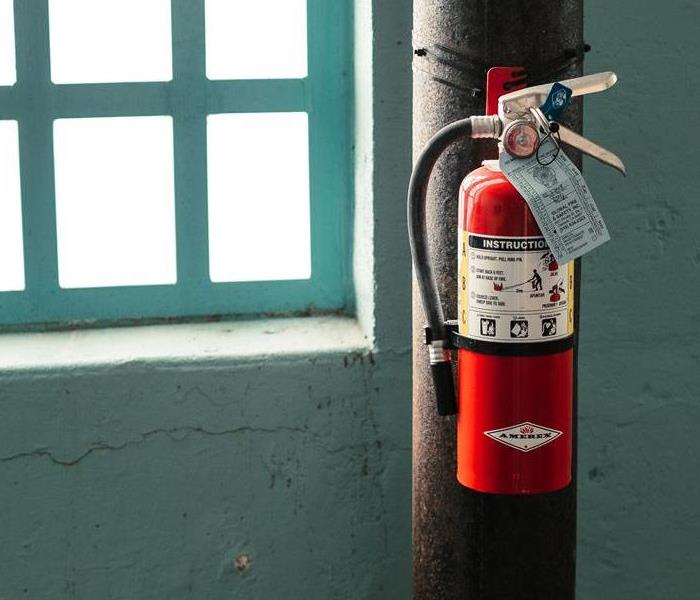 Fire extinguishers are an important part of keeping your home or business safe.
Fire extinguishers are an important part of keeping your home or business safe.
Home is where we feel safe and secure, but it's important to remember that fire hazards can lurk within our own four walls. House fires can be devastating, but by implementing a few simple activities, we can significantly reduce the risk. This blog will explore essential practices to create a fire-safe environment in your home.
Regular Maintenance
Performing regular maintenance tasks can go a long way in preventing fires. Inspect electrical wiring, outlets, and appliances for any signs of damage or malfunction. Replace worn-out cords, faulty switches, and frayed wires promptly. Additionally, clean and maintain heating and cooling systems, chimneys, and dryer vents regularly to prevent the accumulation of lint and debris, which can be highly flammable.
Safe Cooking Practices
Kitchens are common areas where fires can originate. Never leave cooking unattended, especially when using stovetops or deep-frying. Keep flammable objects like oven mitts, dish towels, and curtains away from heat sources. Ensure your cooking area is clean and free from grease buildup, as grease fires can spread rapidly. Lastly, have a fire extinguisher within easy reach and know how to use it effectively.
Responsible Use of Candles and Smoking Materials
Candles create a cozy atmosphere, but pose a significant fire risk. Always place candles on stable, non-combustible surfaces, away from flammable materials. Never leave candles unattended, and extinguish them before leaving the room or going to bed. Similarly, smoking materials should be handled with extreme caution. Use designated ashtrays, fully extinguish cigarette butts, and avoid smoking indoors.
Proper Use and Storage of Flammable Substances
Common household items like cleaning agents, paints, and fuels are highly flammable. Ensure proper storage of these substances in well-ventilated areas away from heat sources. Use them according to instructions and never mix different chemicals, which can lead to hazardous reactions. Always keep these substances out of children's reach.
Install and Maintain Smoke Alarms
Smoke alarms are a crucial early warning system in the event of a fire. Install smoke alarms on every level of your home and inside each bedroom. Regularly test them and replace batteries as needed. Smoke alarms should be replaced every ten years to ensure optimal functionality.
Preventing fires at home requires awareness, responsible practices, and regular maintenance. By implementing these essential practices, you can significantly reduce fire risk and protect yourself, your loved ones, and your property. Remember, fire prevention is a shared responsibility, and every effort counts when creating a fire-safe home environment. Prevention is key, but if you experience a fire, SERVPRO is here to make it like it never even happened.
Emergency Response Plan in Case of Fire
9/7/2022 (Permalink)
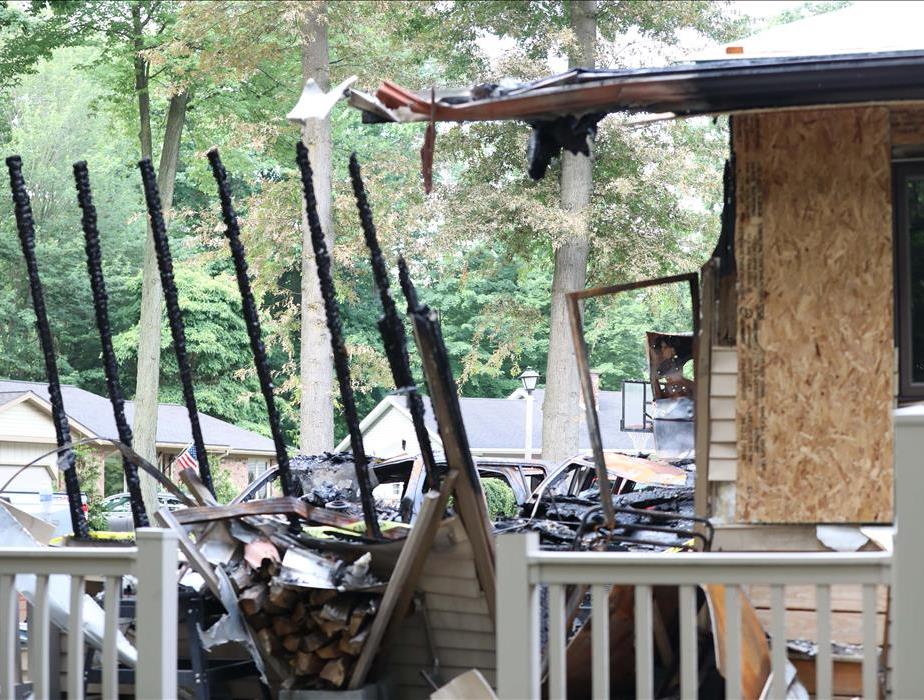 This house fire not only damaged the inside of the home, but it also destroyed the garage and the vehicles in it.
This house fire not only damaged the inside of the home, but it also destroyed the garage and the vehicles in it.
Did you know that in only 3 ½ minutes, a fire in your home or business can reach up to 1,100 degrees Fahrenheit? They can kill people in the building within minutes. Fires are extremely dangerous, causing danger to life, expensive damage repair, and cleanup costs.
Stay ahead of unexpected events with an Emergency Ready Plan (ERP). When disaster strikes, be prepared. An ERP is an in-depth plan created by one of our SERVPRO representatives for your business. It contains all the essential information needed to respond to an emergency quickly. This plan allows our team at SERVPRO to start the mitigation project so your business gets back on its feet. These plans are tailored to your facility with access to an app to feature the emergency process and contact information.
An ERP is a no-cost assessment of your facility with a profile document that contains critical information. It's a short time to complete, but it will save time and effort over the long haul.
An ERP contains information such as insurance, subcontractor contacts, primary on-site maintenance contact, and an in-depth building description of where control panels, fire extinguishers, etc., are located. We'll give you a guide to getting back into your building after a fire and help you identify the line of command for authorizing mitigation work.
These plans are vital for your business to ensure safety and minimize damage and losses. With an Emergency Readiness Plan, you'll know what to do in case of disaster and avoid any interruption to your business.
Having a plan will give you and your employees peace of mind. The consultation and plan are free. You can download the "SERVPRO Ready Plan" mobile app on your iPhone or Android device. Learn more about the app here.
Give our SERVPRO NE Grand Rapids office a call to set up an ERP appointment for all your properties today!
16 firework safety tips!
7/19/2022 (Permalink)
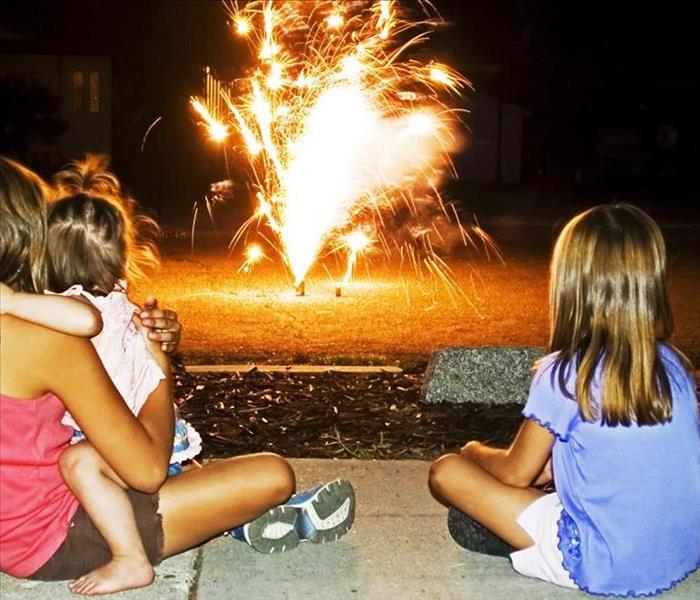 Make sure to keep a safe distance from the fireworks!
Make sure to keep a safe distance from the fireworks!
The National Council on Fireworks Safety’s (NCFS) mission is to educate the public on the safe use of fireworks and encourages consumers to follow the following safety tips before engaging in fireworks celebrations:
1. Obey all local laws regarding the use of fireworks.
2. Know your fireworks – Read the cautionary labels and performance descriptions before igniting.
3. A responsible adult should supervise all firework activities. Never give fireworks to children.
4. Alcohol and fireworks do not mix. Save your alcohol for after the show.
5. Wear safety glasses when shooting fireworks.
6. Light one firework at a time and then quickly move away.
7. Do not hold a fireworks item in your hand.
8. Use fireworks outdoors in a clear area; away from buildings and vehicles.
9. Never relight a “dud” firework. Wait 20 minutes and then soak it in a bucket of water before you discard it.
10. After purchasing fireworks, always store them in a cool, dry place.
11. When using fireworks always have a connected hose, bucket of water, or another water source nearby.
12. Never carry fireworks in your pocket or shoot them into metal or glass containers.
13. Do not experiment with homemade fireworks.
14. Dispose of spent fireworks by wetting them down and place them in a metal trashcan away from any building or combustible materials until the next day.
15. Ensure all pets and animals are away from fireworks noise.
16. With the rise in stress-related disorders affecting American servicemen and women pay special consideration to individuals who may be sensitive to loud noises in proximity to your fireworks show.
If you have any questions regarding how to properly use fireworks we encourage you to consult your local dealer.
About The National Council on Fireworks Safety – The National Council on Fireworks Safety is a nonprofit organization dedicated to educating the public about the safe and responsible enjoyment of consumer fireworks. For more information, visit http://www.fireworkssafety.org.
Stay safe this summer and 4th of July, and if a firework accident leaves your home with fire damage make sure to give us a call!
Campfire safety tips!
6/7/2022 (Permalink)
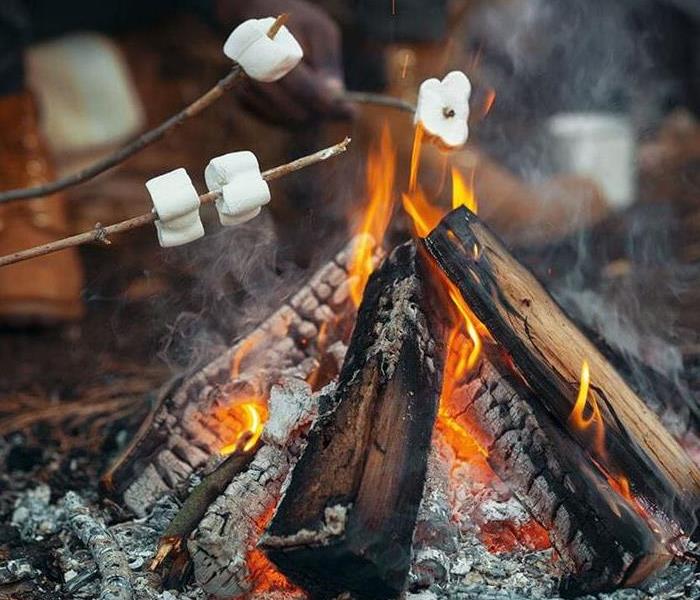 It's important to stay safe around campfires!
It's important to stay safe around campfires!
Having campfires and making smores are common summertime staples in the great state of Michigan! However, camp fires can quickly get out of hand if they are not monitored or properly managed. Here is a list of tips and tricks to keep in mind this summer while sitting around the campfire!
1. Be aware of your surroundings by making sure the campfire is set up away from dry grass and leaves. Dried out grass and leaves catch fire easily, and they spread fire quickly too. Also, make sure your campfire is far away from hanging free branches that could catch on fire.
2. Keep the size of the fire relatively small. Large fires are riskier, and pose a greater chance of getting out of control.
3. It’s always a good idea to keep a shovel and water close by when you’re having a campfire, so you can safely put the fire out when finished. According to smokeybear.com, to put a fire out, follow these steps: Pour lots of water on the fire, and drown ALL embers, not just the red ones. Pour water until hissing sound stops. With your shovel, scrape any remaining sticks and logs to remove any embers. Make sure that no embers are exposed and still smoldering. Continue adding water, dirt or sand and stir with a shovel until all material is cool. If it’s too hot to touch, it’s too hot to leave.
https://smokeybear.com/en/prevention-how-tos/campfire-safety/how-to-maintain-and-extinguish-your-campfire
4. If you are enjoying your fire at a campground or RV park, make sure to follow park rules for starting and putting out fires.
5. Never leave a campfire unattended.
6. Do not put anything other than wood into the fire.
7. Do not pull sticks out of the fire when blazing
8. Check out the weather before starting a campfire, and do not make one if the forecast shows wind. Wind can cause the fire to spread!
We hope that by sharing these tips, you will feel confident hosting a campfire for your friends and family! However, if fire damage does occur, we are here to help and are available 24 hours a day, 7 days a week. Enjoy the smores, everybody!
Fire safety tips for the home
3/4/2022 (Permalink)
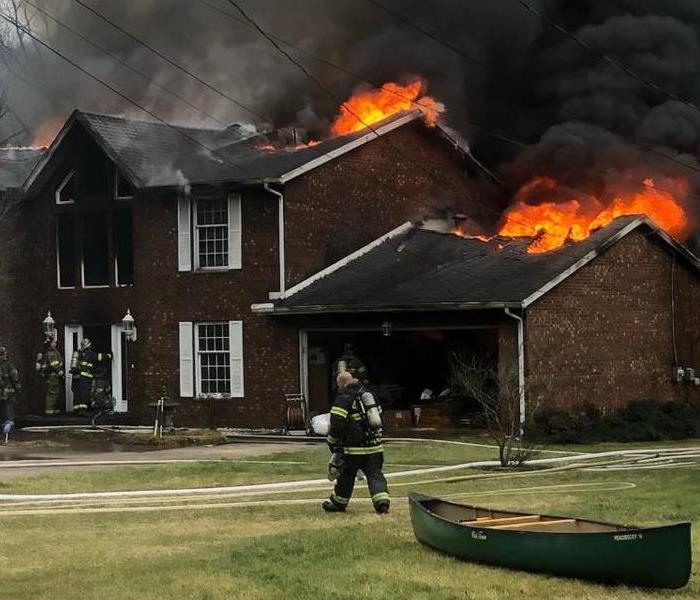 One of a home owner's worst nightmares!
One of a home owner's worst nightmares!
A house fire can be one of the most devastating things a home owner can go through. The fires can range from a small kitchen fire to an entire inferno that consumes the whole house. While fires can cause a massive amount of money to the home owner, the most important issue during a fire is personal safety. When a fire starts you may only have a minute or two to escape safely after smoke alarms start to go off. Here are some tips to help make sure you are prepared in case of a fire in your home.
Smoke Alarms
Smoke alarms are an essential piece of home safety, and are critical when it comes to fire safety. The faster you are alerted to a fire, the quicker you can respond appropriately, and the quicker you can escape a potentially life threatening situation. Its recommended by the National Fire Protection Association to keep a smoke alarm on every level of the house, and one in every bedroom. They also recommend checking the batteries once a month.
Escape Plans
Having an escape plan is incredibly important when it comes to fire safety. As mentioned earlier when your smoke alarm goes off you may only have a couple of minutes or less to get out of your house safely. Preparing an escape plan with planned routes out of the house is of the utmost importance. An understanding of your house layout is important as well in case your original exit plan is blocked by fire or debris, that way you can make an adjustment on the fly if need be.
Dealing with a fire in your home? Give us a call! (616) 647-4300
Be careful heating your home in the winter!
2/7/2022 (Permalink)
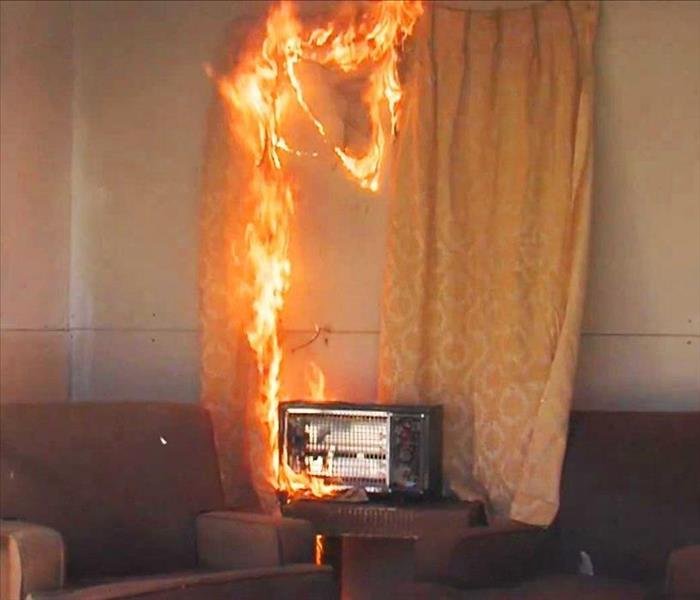 A demonstration of a space heater catching fire
A demonstration of a space heater catching fire
During the cold winter months we experience in West Michigan, people are doing just about everything they can to keep warm inside of their homes and apartments. While it's important to stay warm, making sure you are doing it safely is just as important. Many of the tactics people use to keep their house warm are also serious potential fire hazards. Here are some of the things you should keep in mind when heating your home.
Space Heaters
Space heaters are an extremely popular method of heating areas of your home that trend colder than the rest of the house. Between 2014 and 2018 space heaters accounted for 14% of all home fires, and 19% of fire related deaths. Space heaters need 3 feet of open space around it to help prevent fires. Never place shoes or other items in front of a space heater to warm them up. As well space heaters should not be plugged into an extension cord, as this can cause them to overheat and start fires. Make sure as well to never leave a space heater on an unattended.
Fire Places
Fire places in homes can be a huge draw for home buyers and while they can make a living space feel comfy and warm during the winter months, they can also be a huge fire hazard. Obviously a fire place will have an open flame, so make sure to keep anything flammable at least 3 feet away at all times. If you use your fire place regularly, you should make sure to have your chimney cleaned at least once a year. Burning wood produces a thick, oily, substance called creosote that builds up in the chimney and is highly flammable.
Gas Furnaces
A well maintained gas furnace is usually the safest and most effective way to heat your home. If your furnace is old or hasn't been properly maintained you could be at risk for carbon monoxide poisoning. With gas furnaces you may also be at risk of natural gas leaks. Gas leaks can cause fires and explosions if ignited.
Dealing with the aftermath of a fire in your home? Give us a call! (616) 647-4300!
The fire dangers of Christmas decorations
12/6/2021 (Permalink)
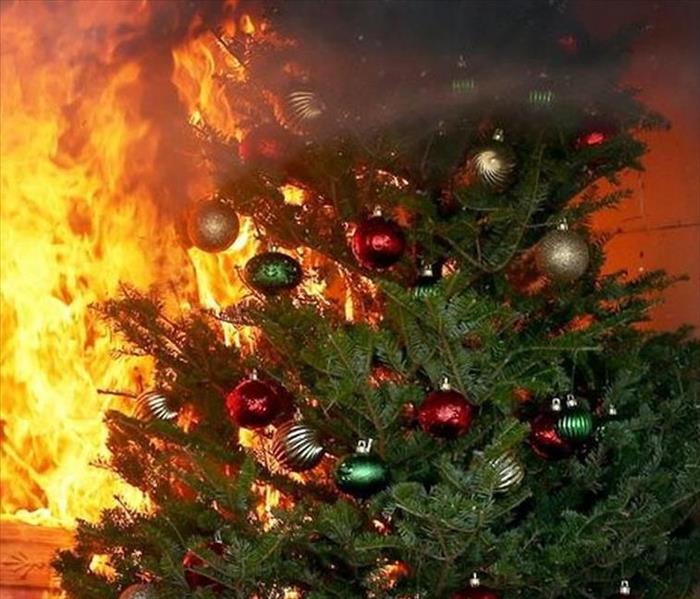 When real Christmas Trees go un-watered they have a higher chance of catching fire.
When real Christmas Trees go un-watered they have a higher chance of catching fire.
Christmas is one of the most wonderful times of the years, where decorations inside and outside of the home light up the night and keep you and your family comfy during the cold December nights. While Christmas lights and trees are sure signs of the holidays, many can also end up becoming dangerous fire hazards. If you aren't careful your happy holidays could turn into a disaster very quickly. Make sure to understand the dangers of your holiday decorations to ensure you and your family enjoy a Merry Christmas.
- Real Christmas Trees. Real trees are the most popular option for Christmas Trees. Around 78% of Americans choose a real tree for their home, and spend over one billion annually on their trees. Without proper care a real tree can be engulfed in flames in under a minute. Make sure to keep water in the base of the tree stand to prevent it from drying out, and never put your tree close to a fireplace, candles, or other open flame.
- Fake Christmas Trees. Most fake Christmas trees pose less of a fire hazard than real trees because they are treated with flame retardant chemicals. Flame retardant does not mean a fake tree cannot catch fire however and similar precautions should be taken as if you had a real tree. Because of the chemicals added to fake trees, smoke from them in case of a fire can contain toxic chemicals that can be extremely harmful.
- Christmas Lights. Just because your Christmas lights worked last year don't assume they will this year. Make sure to check each strand for broken bulbs and nicks in the cord. Any exposed wires on the string of lights could lead to a fire if they come into contact with a flammable source.
- Male to Male Extension Cords. Male to Male extension cords are a relatively rare type of power accessory. You won't find them in many reputable hardware stores, but they have popped up online in recent months. These cords have two prong end and when plugged in electricity is constantly flowing to the unplugged prongs. This can lead to serious physical damage if touched. They also produce a lot of heat on the exposed end and can cause fires if they come into contact with anything flammable.
Unexpected fire damage raining on your holiday parade? Give us a call and we can make it "Like it never even happened." (616) 647-4300
Is your home a fire Hazard?
9/10/2021 (Permalink)
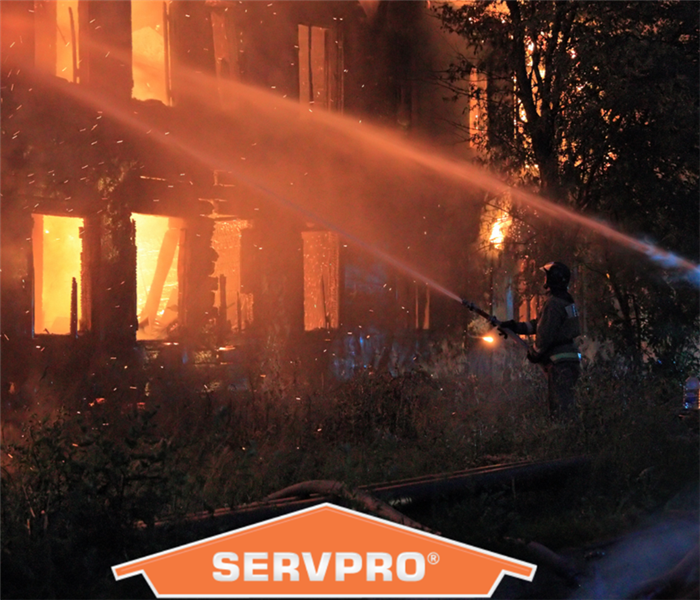 Fires can be prevented with some simple precautions
Fires can be prevented with some simple precautions
A fire can happen within minutes and with little to no warning - it starts with the smallest of flames, then it spreads while it searches for fuel. And before you know it you could have a life threatening situation on your hands. But fires can be prevented and with some very simple precautions. It is important that we take the time to be diligent in fire safety. It may seem tedious and an inconvenience, but I promise you losing your home or business to a fire can be a much bigger inconvenience. Here are some simple precautions you can take.
- Smoke alarms can double your chance of you surviving a fire. And it goes without saying that in your home or business, you should have several.
- Do not be neglectful when it comes to testing them. Check the batteries regularly
- You should test them once a month and change the batteries every 6 months
- Keep fire extinguishers in your home. Make sure they are easily accessible
- In your kitchen keep paper towels, hand towels and curtains away from burners
- If your microwave is not built in, make sure it is free of surrounding clutter and has good ventilation
- Do not have more than one heating device plugged into an outlet
In the event that you have experienced a fire, there are a few questions to ask such as:
- Is it safe to stay in the house?
- What electrical or slip and fall hazards are there?
- Determine what activities are safe for you to perform
- Wet materials can be very heavy so be careful
We here at SERVPRO understand how devastating a fire can be. And that is why we always strive to be the very best in cleaning up after a fire. Our motto is “Like it never even happened.” We have highly trained technicians and project managers that will walk you through the process with care and compassion. We will work with you from start to finish and work to get you back in your home or business safely and quickly.
If you have experienced a fire in your home or business, please call us at (616) 647-4300
Fire, smoke, and soot damage services!
7/19/2021 (Permalink)
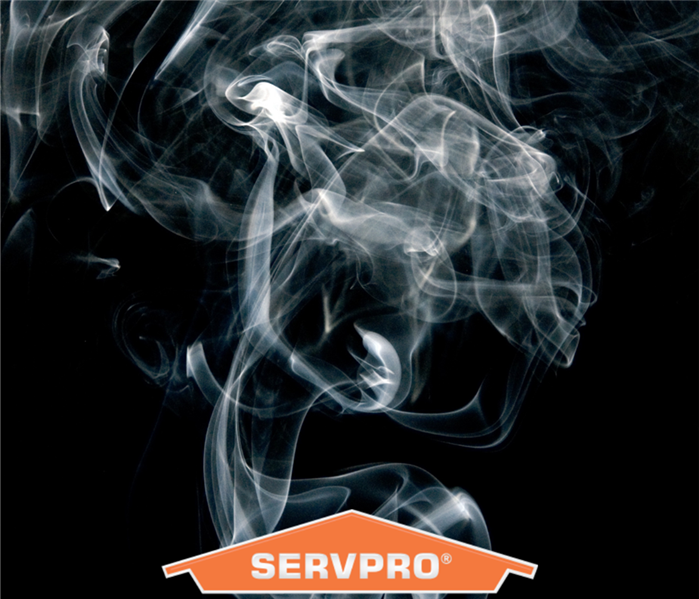 SERVPRO's equipment, expertise, & experience sets us apart from the competition. Have Questions about Fire, Smoke, or Soot Damage? Give us call!
SERVPRO's equipment, expertise, & experience sets us apart from the competition. Have Questions about Fire, Smoke, or Soot Damage? Give us call!
SERVPRO of NE Grand Rapids/Ionia & Montcalm counties has IICRC Certified and Trained Restoration Technicians on staff to assist with All your Fire, Smoke and Soot Clean-up needs.
Smoke and soot is very invasive and can penetrate various cavities within your home, causing hidden damage and odor. Our smoke damage expertise and experience allows us to inspect and accurately assess the extent of the damage to develop a comprehensive plan of action.
Smoke and soot facts:
- Hot smoke migrates to cooler areas and upper levels of a structure.
- Smoke flows around plumbing systems, seeping through the holes used by pipes to go from floor to floor.
- The type of smoke may greatly affect the restoration process.
Different Types of Smoke
There are two different types of smoke–wet and dry. As a result, there are different types of soot residue after a fire. Before restoration begins, SERVPRO of NE Grand Rapids / Ionia & Montcalm Counties will test the soot to determine which type of smoke damage occurred. The cleaning procedures will then be based on the information identified during pretesting. Here is some additional information:
Wet Smoke – Plastic and Rubber
- Low heat, smoldering, pungent odor, sticky, smeary. Smoke webs are more difficult to clean.
Dry Smoke – Paper and Wood
- Fast burning, high temperatures, heat rises therefore smoke rises.
Protein Fire Residue – Produced by evaporation of material rather than from a fire
- Virtually invisible, discolors paints and varnishes, extreme pungent odor.
Our Fire Damage Restoration Services
Since each smoke and fire damage situation is a little different, each one requires a unique solution tailored for the specific conditions. We have the equipment, expertise, and experience to restore your fire and smoke damage. We will also treat your family with empathy and respect and your property with care.
Have Questions about Fire, Smoke, or Soot Damage? Give us a call! 616-647-4300!
Campfire Safety Tips!
6/7/2021 (Permalink)
 Having a campfire is a summer staple in Michigan. Check out our tips for having a safe and fun campfire!
Having a campfire is a summer staple in Michigan. Check out our tips for having a safe and fun campfire!
Having campfires and making smores are common summertime staples in the great state of Michigan! However, camp fires can quickly get out of hand if they are not monitored or properly managed. Here is a list of tips and tricks to keep in mind this summer while sitting around the campfire!
- Be aware of your surroundings by making sure the campfire is set up away from dry grass and leaves. Dried out grass and leaves catch fire easily, and they spread fire quickly too. Also, make sure your campfire is far away from hanging free branches that could catch on fire.
- Keep the size of the fire relatively small. Large fires are more risky, and pose a greater chance of getting out of control.
- It’s always a good idea to keep a shovel and water close by when you’re having a campfire, so you can safely put the fire out when finished. According to smokeybear.com, to put a fire out, follow these steps: Pour lots of water on the fire, and drown ALL embers, not just the red ones. Pour water until hissing sound stops. With your shovel, scrape any remaining sticks and logs to remove any embers. Make sure that no embers are exposed and still smoldering .Continue adding water, dirt or sand and stir with a shovel until all material is cool. If it’s too hot to touch, it’s too hot to leave. https://smokeybear.com/en/prevention-how-tos/campfire-safety/how-to-maintain-and-extinguish-your-campfire
- If you are enjoying your fire at a campground or RV park, make sure to follow park rules for starting and putting out fires.
- Never leave a campfire unattended.
- Do not put anything other than wood into the fire.
- Do not pull sticks out of the fire when blazing
- Check out the weather before starting a campfire, and do not make one if the forecast shows wind. Wind can cause the fire to spread!
We hope that by sharing these tips, you will feel confident hosting a campfire for your friends and family! However, if fire damage does occur, we are here to help and are available 24 hours a day, 7 days a week. Enjoy the smores, everybody!
6 insane (but true!) Facts about FIRE!
3/18/2021 (Permalink)
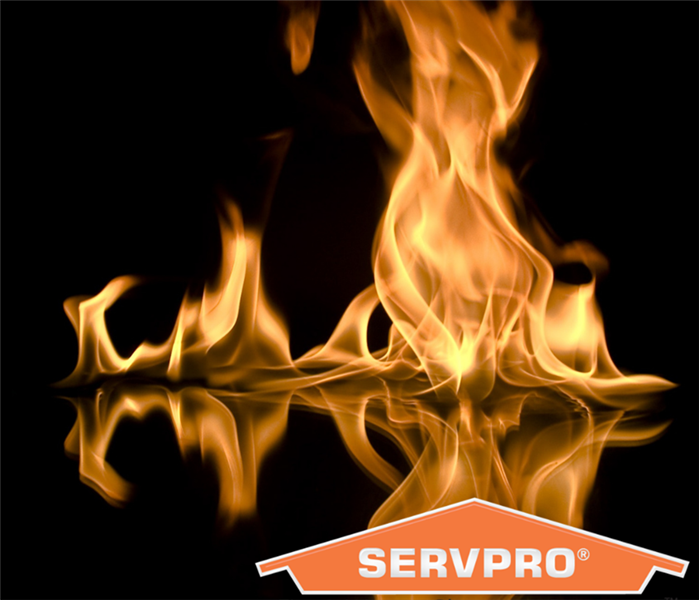 There are a LOT of crazy facts about fire and how it works. Keep reading to learn something new!
There are a LOT of crazy facts about fire and how it works. Keep reading to learn something new!
6 insane (but true!) Facts about FIRE!
- Did you know that fire makes water? If you hold a cold spoon over a flame, water vapor will condense on the metal. Give it a try for yourself!
- Earth is the only planet that has enough oxygen to allow fire.
- America’s deadliest fire occurred on a steamship on April 27, 1865. The steamship, called “The Sultana”, was 6 times over the capacity limits when the boilers on the ship exploded. This explosion started a massive fire that left 1,547 people dead.
- Have you ever noticed how fire isn’t always orange, or that it sometimes changes color? The color of the flames is related to how much oxygen is in the fire. For example, a fire with low oxygen flames gives off a yellow hue, while fires with high oxygen levels show off a blue flame.
- Did you know that a house fire will double in size every two minutes? This is another reason why it is VITAL to have an evacuation plan that everyone in the family is familiar with.
- The Great Fire of London took place in 1666, and wrecked 80% of the beautiful city, and took about 200,000 human lives. Interestingly enough, this massive fire actually helped to end the bubonic plague by killing most of the rats that were carrying the disease.
Facts and information courtesy of:
https://www.history.com/news/plague-pandemic-great-fire
https://skysaver.com/blog/10-surprising-things-didn't-know-fire-skysaver-rescue-backpacks/
Unplugging your hair styling tools
2/12/2021 (Permalink)
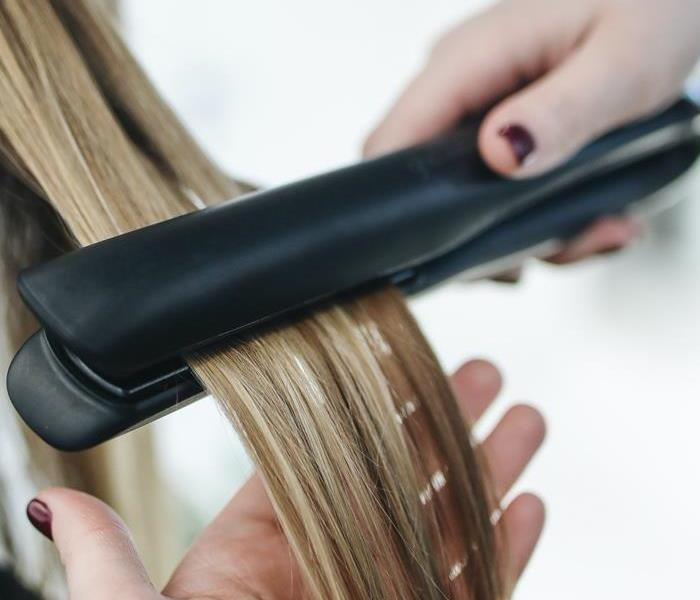 Turning off your hair tools is only the first step. Make sure you unplug them too!
Turning off your hair tools is only the first step. Make sure you unplug them too!
If you live in a household where family members use hair tools, you’ve probably experienced the anxiety of wondering if they turned off and unplugged the curling iron, blow dryer, or straightener before leaving the house. Unfortunately, electric beauty tools such as these are a recurring cause of house fires and painful skin burns. Keep reading to view our safety tips to keep your home and family protected against house fires and burn injuries!
- Turn off and unplug your devices. This tip is pretty self explanatory, but it’s necessary to keep your home, yourself, and your family safe! If you frequently forget to turn off and unplug your devices, consider setting an alarm or writing a reminder on a sticky note! If you only turn off your hair tools, but don’t actually unplug them, consider this quote from https://www.hsiprofessional.com : “Unplug your flat iron (or other electric hair tool) after using it. Even though your flat iron may be turned off, any plugged in appliance is still electrically live. Unplug your flat iron to avoid any chance of an unexpected electrical problem.
- Keep your electric beauty / hair tools away from anything wet such as sinks and tubs with water in them.
- Use a mat or heat resistant stand. While you’re doing your hair, you are going to want to put your blow dryer or curling iron or straightener down at some point. Always place your device on a heat resistant mat, a clean, non-flammable countertop, or on a heat resistant stand. The goal is to avoid placing electronic beauty tools on carpet, towels or other materials that could melt or catch fire.
- Make sure that all of your hair products such as hairspray or dry shampoo are a safe distance from your plugged in / hot beauty tools. Beauty products can be flammable!
- Don't wrap the cord around your hair tools when you’re finished! Tightly wrapping the cord around your still warm styling tool could cause shorts or burn the electrical cord and expose the wires. A short in the cord could also cause your iron to turn off unexpectedly the next time you use it, or to not turn back on at all. A better bet is to lay the cord back and forth loosely on top of itself and then put it away for storage.
SERVPRO of NE Grand Rapids specializes in the cleanup and restoration of residential and commercial property after Fire damage. Our staff is highly trained in property damage restoration. From initial and ongoing training at SERVPRO’s corporate training facility to regular IICRC-industry certification, rest assured our staff is equipped with the knowledge to restore your property.
If you need help with cleaning up after Fire damage, call the Professionals at SERVPRO of NE Grand Rapids 24/7 616.647.4300
The 5 types of Fires
1/8/2021 (Permalink)
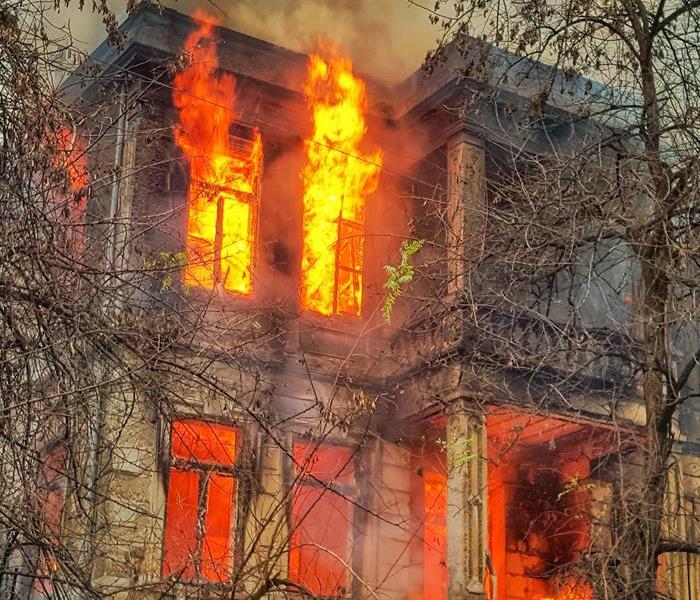 Did you know that fires are categorized into into 5 different classes?!
Did you know that fires are categorized into into 5 different classes?!
Did you know there are FIVE different types of fires?! Fires are categorized into 5 different classes, and each class has different elements that make it unique.
Class A: Class A fires are defined as ordinary combustibles. To put it in simpler terms, these types of fires use commonly flammable material as their fuel source. Wood, fabric, paper, trash ,and plastics are common sources of Class A fires. This is essentially the common accidental fire encountered across several different industries. Trash fires are one such example. Class A fires are commonly put out with water or monoammonium phosphate. (https://www.strikefirstusa.com/news-articles/five-classes-of-fires-fire-extinguishers-stop-them/)
Class B: Class B fires are fueled by flammable liquids, such as gasoline, petroleum greases, tars, oils, oil-based paints, solvents, and alcohols. These fires also include flammable gases such as propane and butane. Class B fires do not include fires involving cooking oils and grease. (https://www.femalifesafety.org/types-of-fires.html)
Class C: A Class C fire is one in which an energized electrical element is the cause of the fire. “Energized” means that the electrical component is connected to a power source. Class C fires may be started from faulty wiring, a short circuit, damage to power cords, overloaded electrical outlets, or overheated/overcharged devices. (https://blog.koorsen.com/what-is-a-class-c-fire-extinguisher-used-for
Class D: Class D fires are characterized by the presence of burning metals. However, not all metals are flammable. Sodium, potassium, uranium, lithium, plutonium, calcium, magnesium, and titanium are all examples of combustible metals. According to www.elitefire.co.uk, the most common type of class d fires involve magnesium and titanium. (https://www.elitefire.co.uk/help-advice/detect-and-extinguish-class-d-fires/)
Class K: Last but not least, we have Class K fires. According to the following quote from https://www.strikefirstusa.com; “A Class K fire is defined as a cooking fire involving combustion from liquids used in food preparation. Technically a type of liquid fire, Class K fires are distinct enough to warrant their own classification. Cooking fires are fueled by a wide range of liquid cooking materials. Greases, cooking oils, vegetable fat, and animal fat are all fuel sources found in Class K fires.” https://www.strikefirstusa.com/news-articles/five-classes-of-fires-fire-extinguishers-stop-them/
No matter what type of fire you experience, SERVPRO of North East Grand Rapids is here to help! Our professional crews have been expertly trained to restore the damage done to your home or business. Call us today to set up a free quote! (616)-647-4300
Avoiding Kitchen Fires During the Pandemic
12/9/2020 (Permalink)
 Residential kitchen fires have majorly increased during the pandemic! Keep reading to learn how to keep your home and family safe!
Residential kitchen fires have majorly increased during the pandemic! Keep reading to learn how to keep your home and family safe!
The global pandemic has changed all of our lives in one way or another. For many people, one of the biggest changes is not being able to go to restaurants. Because of this, people are cooking at home more, which has caused an increase in residential kitchen fires. According to https://www.newschannel5.com/ , “During the COVID-19 pandemic, The Red Cross suggests revisiting your exit plan in the case of a fire to lessen your risk of being seriously injured or killed. We're believing that because more people are at home, we're seeing an increase," said Crystal Fisher of the Red Cross. To avoid having a home fire, there are a few things you can do to keep your home and family safe. 1.) Make sure your smoke alarms are working and are up to date. 2.) Review your exit plan with your family in case of a fire. 3.) Use timers when cooking so your food doesn’t overcook and burn. 4.) Keep any flammable substances away from the stove area. If all else fails and you do end up having a kitchen fire, call 911 right away! Once the fire department puts out the fire, give us a call! We’ll be there to give you peace of mind, and restore the fire damage done to your home or business.
Do you ever think twice about your outlets?
11/4/2020 (Permalink)
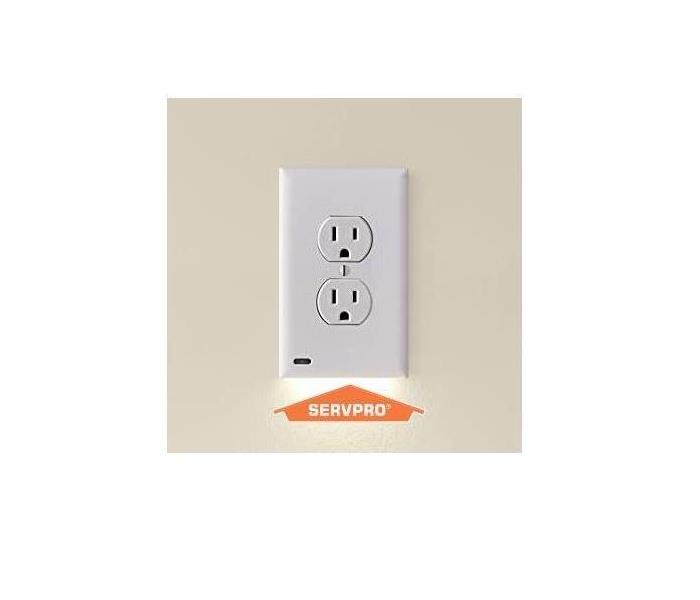 It might not seem like a big deal, but checking on your wall outlets could save you a lot of trouble!
It might not seem like a big deal, but checking on your wall outlets could save you a lot of trouble!
How often do you give your outlets a second glance? If you’re like most people, probably not very often. However, checking on your outlets every once in a while is crucial, and could save you from a fire starting in your home. According to www.preferredlinkins.com, “Just like a damaged cord can cause some serious damage, so can an outlet that has become loose overtime or that was installed or replaced incorrectly. Usually fires within an outlet are caused by missed connections resulting from contacts that are worn out.”
Next time you plug something into your outlets, take a closer look. If you see a spark, or if the outlet itself feels loose, get it fixed right away. Just like it’s important to check on other appliances in your home, do yourself a favor and start inspecting your outlets regularly! Taking this extra precaution could save you from experiencing a fire!
SERVPRO of NE Grand Rapids specializes in the cleanup and restoration of residential and commercial property after Fire damage. Our staff is highly trained in property damage restoration. From initial and ongoing training at SERVPRO’s corporate training facility to regular IICRC-industry certification, rest assured our staff is equipped with the knowledge to restore your property.
If you need help with cleaning up after Fire damage, call the Professionals at SERVPRO of NE Grand Rapids 24/7 616.647.4300
Accidents happen...
10/13/2020 (Permalink)
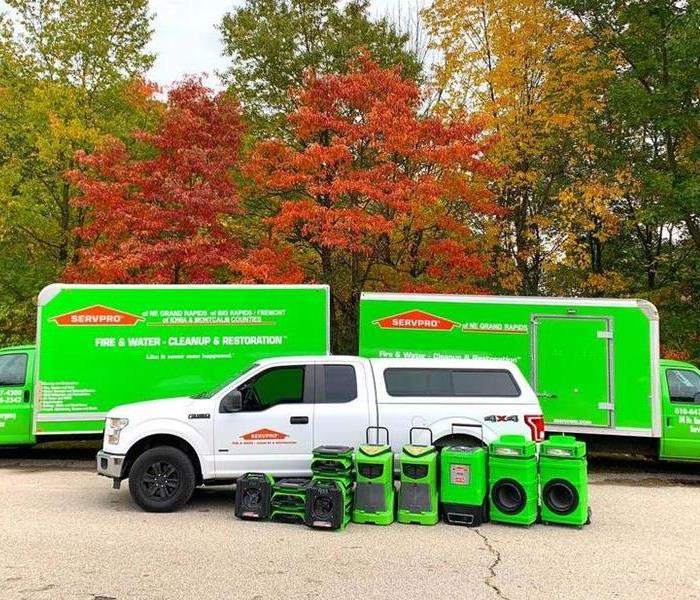 Accidents happen, and when they do, we've got your back!
Accidents happen, and when they do, we've got your back!
Nobody plans on their home or business catching on fire, but accidents happen every day. Small fires can start at your home or business for a variety of reasons. Fires caused by space heaters, candles, cigarettes, or small grease fires can potentially be put out quickly using a fire extinguisher depending on its severity and size. However, it is important that you are equipped with the proper extinguisher and the knowledge of how to properly use it. The following are 3 different types of fire extinguishers:
Type A: able to put out burning paper, wood, or fabric
Type B: works best to put our fires caused by oil, butane, or gasoline
Type C: best for electrical fires
These types may be further categorized such as a “2-A” extinguisher vs a “4-A” extinguisher. You may find that it would be best to keep more than one type in your Rockford home or Grand Rapids commercial property in order to be prepared for any type of fire. If you find that a fire explodes in your home or business that is bigger than a small grease fire, call 911 immediately. Your safety and the safety of those around you is most important!!! While we hope this never happens to you, we are here to restore the fire damage in case it does. Our crews are experienced in dealing with all types of fire damage, and they pride themselves on treating each customer like family.
IICRC Certified!
9/14/2020 (Permalink)
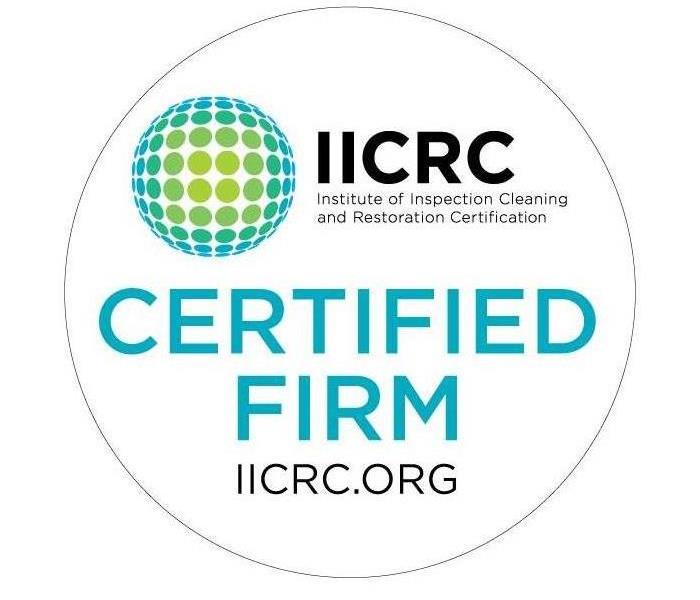 SERVPRO of NE Grand Rapids is an IICRC Certified Firm!
SERVPRO of NE Grand Rapids is an IICRC Certified Firm!
You can trust our professional crews at SERVPRO of NE Grand Rapids to restore your home or business from fire damage. Why can you trust us? Because we are an IICRC Certified Firm! IICRC--The Institute of Inspection, Cleaning, and Restoration Certification creates the standards for the restoration industry. The IICRC also provides restoration companies with training and certifications! IICRC Certified Firms have the right to display the IICRC Certified Logo to let customers know they’ve had the proper training and certifications to get the job done!
IICRC Certified Firms must
- Present accurate information to consumers and conduct business with honesty and integrity.
- Require a technician on all jobs who has been formally trained and passed all required tests.
- Require a continuing education program to keep technicians up-to-date on the latest changes in the industry.
- Maintain liability insurance to protect all parties in the event of an accident.
- Maintain a written complaint policy and agree to Better Business Bureau or similar arbitration to resolve disputes, and accept the conclusions and recommendations of arbitration.
We know that you have many choices when it comes to choosing a restoration company. We want to assure you that SERVPRO of NE Grand Rapids is a certified firm with professionally trained techs and project managers to get the job done the right way. Here at SERVPRO of NE Grand Rapids, we also value customer service and make sure to treat each customer as if they were family. We are available 24 hours a day, 7 days a week to meet all of your emergency needs.
About SERVPRO of North East Grand Rapids
SERVPRO of North East Grand Rapids specializes in the cleanup and restoration of residential and commercial property after a fire, smoke or water damage event. Our staff is highly trained in property damage restoration and we are an IICRC Certified Firm. We believe in continuous training: from initial and ongoing training at SERVPRO’s corporate training facility to regular IICRC-industry certification, rest assured our staff is equipped with the knowledge to restore your property.
EPA Lead-Safe Certified Firm
IICRC - Institute of Inspection Cleaning and Restoration
What is a Smoldering Fire?
7/27/2020 (Permalink)
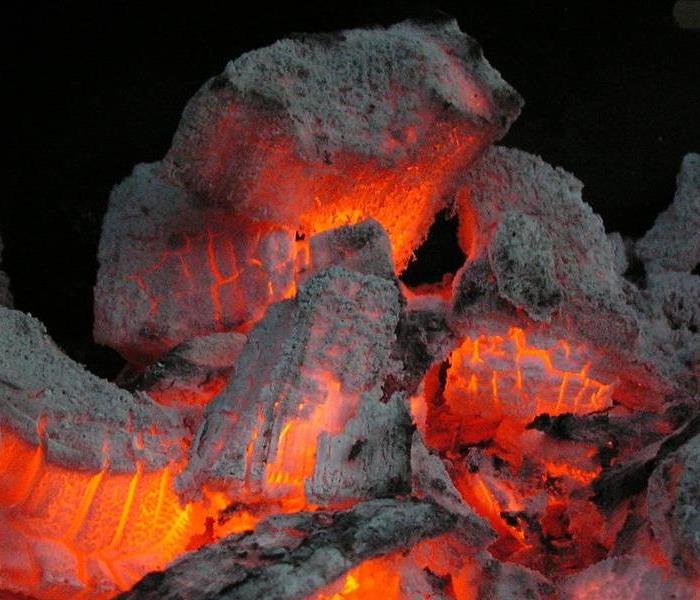 Smoldering fires have no flames, are slower to spread, and have lower temperatures than flame fires!
Smoldering fires have no flames, are slower to spread, and have lower temperatures than flame fires!
When most people think of a fire, they picture tall orange flames, extremely hot temperatures, and maybe a marshmallow or two.
However, there is another kind of fire that can be just as dangerous as the regular fires we see. These fires are called Smoldering fires. Smoldering fires differ from flame fires in a few ways. Where flame fires have visible flames, smoldering fires are flame less. Flame fires start in the gas phase, where smoldering fires start on the surface of a solid. Flame fires reach high temperatures, where smoldering fires have lower temps. Flame fires spread fast, where smoldering fires are up to ten times slower than the latter. Smoldering fires also produce more toxic gasses than flame fires do. According to sciencedirect.com, smoldering fires are defined as “Slow, low temperature, flames form the combustion of a solid fuel.” To put it in layman's terms, smoldering fires are a flame less, low temperature burn. Once these smoldering fires are ignited, it is a challenge to put them out. This makes them one of the top leading causes of residential fires.
If you experience a smoldering fire in your home or business, please don’t hesitate to reach out to us! The team at SERVPRO of NE Grand Rapids is happy to help you through this process, and restore any damage done to your home or business. Call us today at 616-647-4300!
Toxic Smoke
6/11/2020 (Permalink)
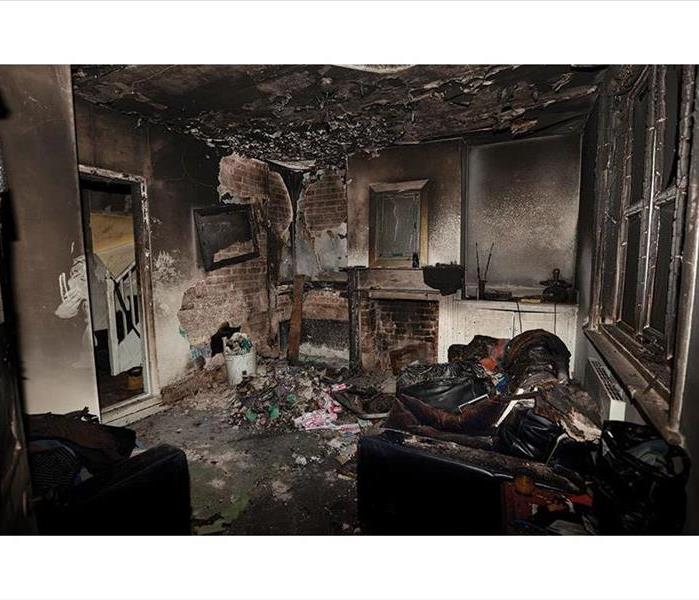 If you experience a fire in your home or business, give us a call to restore the smoke damage!
If you experience a fire in your home or business, give us a call to restore the smoke damage!
We all know that when a house or business goes up in flames, it's typically followed by LOTS of smoke, which is full of toxic chemicals. Consider the following quote from https://www.uphelp.org/ “A typical structure fire may generate literally tens of thousands of toxic chemicals and gasses as a variety of materials and products are burned.” YIKES! That’s a LOT of toxic chemicals. When most people think of a structure fire, their first few thoughts are usually getting everyone out safely and assessing the damage. While these are extremely important things to worry about, a lot of people forget to think about how breathing in the toxic chemicals in smoke can affect their overall health.
If you ever experience a fire in your home or business, make sure to call 911 ASAP! After the fire has been put out, find a place to stay with either friends, family, or a hotel. Even if your home or business isn’t completely destroyed, it’s still not safe to stay there until a professional restoration company cleans, disinfects, and sanitizes the structure. SERVPRO of North East Grand Rapids is here for you! Our professional crews are expertly trained on the proper procedures, equipment, and products needed to restore the smoke damage in your home or business. We care for all of our customers, and want you and your family to be safe from inhaling toxic smoke. We offer free estimates, and are conveniently opened 24/7 to meet your emergency needs. While we hope you never experience a fire loss, just know that you can count on us to restore the damage and make it "Like it never even happened."
Making your candles last longer!
4/1/2020 (Permalink)
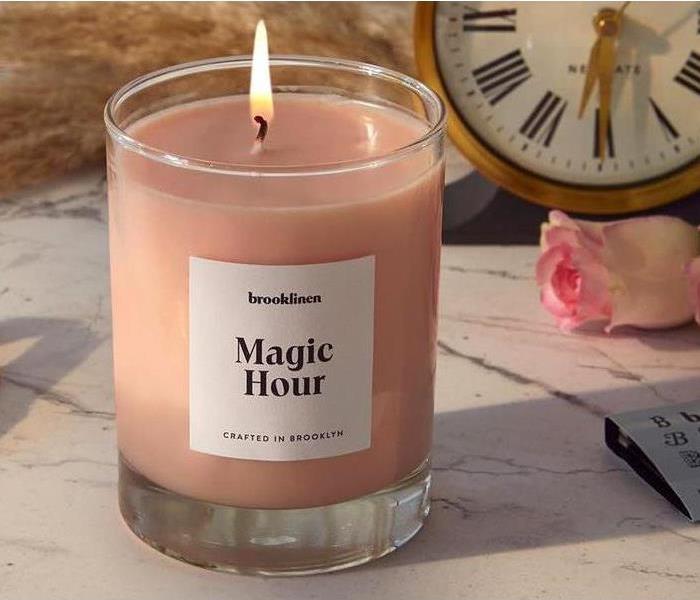 Make your candles last longer! Keep reading to learn more!
Make your candles last longer! Keep reading to learn more!
Candles are one of those things that almost everybody loves. They smell good, they're a great way to add decor to your home or office, and they make the PERFECT gift!
On the other hand, candles (at least high quality ones!) can cost a pretty penny. Thankfully, we found these awesome tips that can make your candles last longer!
Tip #1. Freeze the candle. The wax being hardened will make it burn slower!
Tip #2. Burn the candle just enough for a small pool of melted wax. Sprinkle salt into the wax pool to slow the melting!
Tip #3. Trim the wick before lighting. Longer wicks cause the wax to burn quicker.
As always, when burning candles, it's important to remember to blow them out before leaving your Grand Rapids home or office. It's also important to keep lit candles out of reach from children and pets. However, if anything should happen and your home or business suffers from fire damage, give us a call! We are here to help you 24/7.
.
#themoreyouknow #SERVPRO #heretohelp #candletips
Catastrophic Candles!
2/24/2020 (Permalink)
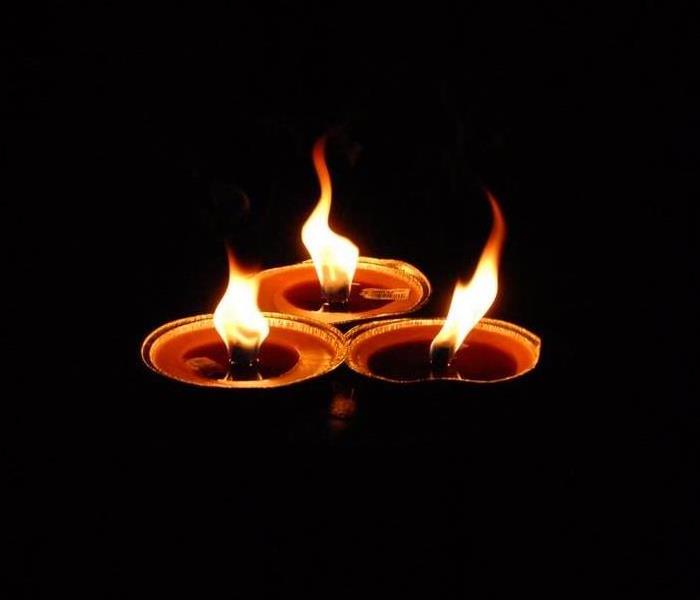 Proceed with caution when burning candles in your Grand Rapids home or business!
Proceed with caution when burning candles in your Grand Rapids home or business!
Do you have candles in your Grand Rapids home or business? We're guessing you do!
With their lovely scent and glowing flames, it's hard to remember that candles cause a lot of harm when not taken care of properly.
Check out these alarming facts about candles from www.nfpa.org
Candles are responsible for:
•3% of reported home fires
•3% of home fire deaths
•6% of home fire injuries
•5% of the direct property damage in home fires
Moral of the story, proceed with caution when burning candles in your Grand Rapids home or business!
While we hope you don't need to call us, if you ever find yourself in need of fire damage restoration services, give us a shout. We’re here for you 24/7.
Soot VS Smoke
1/15/2020 (Permalink)
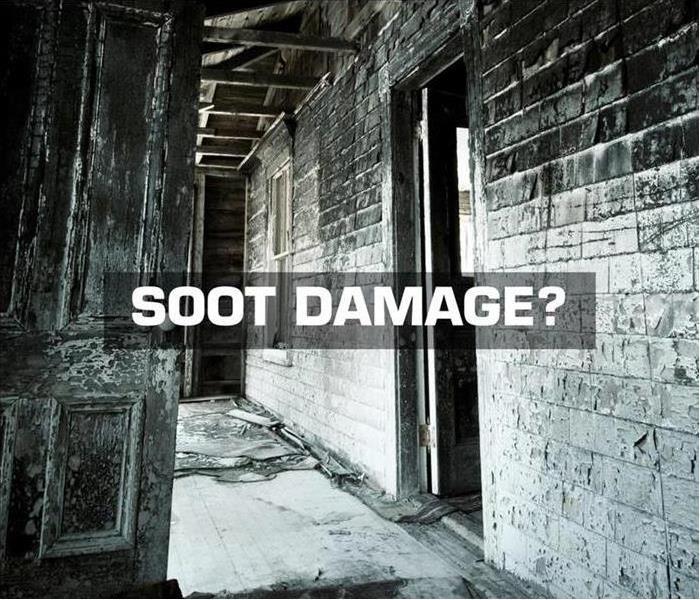 Do you know how soot and smoke damage can affect your home?
Do you know how soot and smoke damage can affect your home?
SERVPRO of NE Grand Rapids realizes that fire damage has many components, including smoke and soot damage. Keep reading to learn more about soot damage, smoke damage, and the difference between the two.
Smoke Vs Soot: What’s the difference?
Smoke occurs when there is incomplete combustion--meaning not enough oxygen to burn the fuel completely. In complete combustion, everything is burned, producing just water and carbon dioxide. When incomplete combustion occurs, not everything is burned. Smoke is a collection of these tiny unburned particles. Each particle is too small to see with your eyes, but when they come together, you see them as smoke.
(Source: https://www.sciencelearn.org.nz/resources/748-what-is-smoke )
Soot, is a fine black or brown powder that can be slightly sticky, and is a product of incomplete combustion. A major component of soot is black carbon. Soot is made up of a variety of chemicals, and its exact composition depends on what is being burned.
(Source: https://energyeducation.ca/encyclopedia/Soot )
Smoke and soot facts:
- Hot smoke migrates to cooler areas and upper levels of a structure.
- Smoke flows around plumbing systems, seeping through the holes used by pipes to go from floor to floor.
- The type of smoke may greatly affect the restoration process.
Different Types of Smoke
There are two different types of smoke–wet and dry. As a result, there are different types of soot residue after a fire. Before restoration begins, SERVPRO will test the soot to determine which type of smoke damage occurred. The cleaning procedures will then be based on the information identified during pretesting. Here is some additional information:
Wet Smoke – Plastic and Rubber
- Low heat, smoldering, pungent odor, sticky, smeary. Smoke webs are more difficult to clean.
Dry Smoke – Paper and Wood
- Fast burning, high temperatures, heat rises therefore smoke rises.
Protein Fire Residue – Produced by evaporation of material rather than from a fire
- Virtually invisible, discolors paints and varnishes, extreme pungent odor.
Our Fire Damage Restoration Services
Since each smoke and fire damage situation is a little different, each one requires a unique solution tailored for the specific conditions. We have the equipment, expertise, and experience to restore your fire and smoke damage. At SERVPRO, we care about you and your family, and want to make this situation as painless as possible. We will treat you like family, and respect your items as if they were our own. If you find yourself dealing with the aftermath of a fire, give SERVPRO a call. We’ll restore the damage and make it “Like it never even happened.”
About SERVPRO of NE Grand Rapids:
SERVPRO of NE Grand Rapids specializes in the cleanup and restoration of residential and commercial property after fire damage. Our staff is highly trained in property damage restoration. From initial and ongoing training at SERVPRO’s corporate training facility to regular IICRC-industry certification, rest assured our staff is equipped with the knowledge to restore your property.
If you need help with cleaning up after Water, fire, or mold damage, call the Professionals at SERVPRO of NE Grand Rapids 24/7 616.647.4300
Watch out for Puffbacks!
12/11/2019 (Permalink)
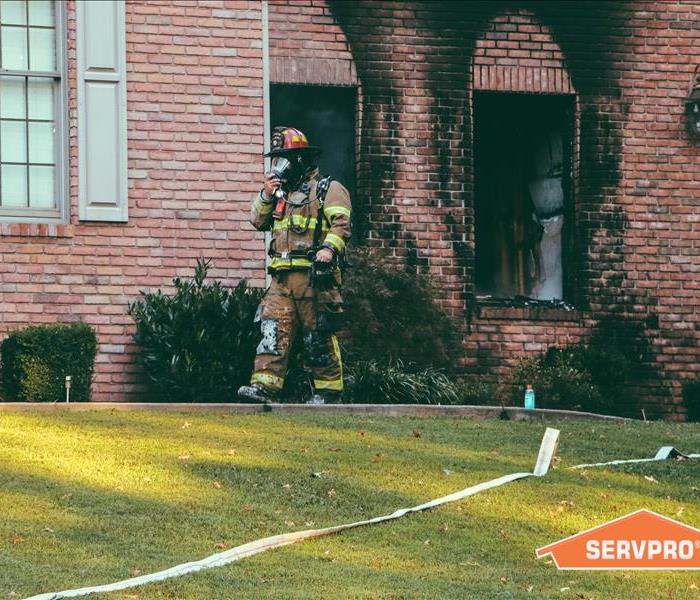 Puffbacks can make a huge mess. Call SERVPRO for help!
Puffbacks can make a huge mess. Call SERVPRO for help!
The snow is falling and the temperatures are dropping. Winter is here! It’s about that time of year where people turn on their heating systems that have been sitting idle for months at a time. If you are lucky, your furnace or boiler will start right up with no issues. If you’re not so lucky, starting up your heating system might result in a puffback. According to tuckey.com, a puffback occurs when an oil burner back fires and spits out smoke and soot, making a mess of your home or business! Puffbacks happen for a number of reasons, so it’s helpful to keep them in mind for preventative measures. Problems such as leaks in oil supply piping, or a defective oil spray nozzle can result in a puffback. Improper heater shutdown, faulty chimney and heater installation, poor ventilation, or clogged heating systems are other common causes for puffbacks. Damage done to the home or business due to puffbacks can range from minimal to severe. Keep an eye out for these warning signs to prevent puffbacks from affecting your home or business! Oil leaks, loud noises when starting up the heating system, noise after shutting it off, and strange smells are all an indication that something is wrong. It’s important to take care of those warning signs quickly so they don’t lead to puffbacks that cause severe damage. However, if you do experience a messy puffback, don’t hesitate to give SERVPRO a call! Our professional crews use the latest technology and safe cleaning products to restore damage done to your home or business!
About SERVPRO of NE Grand Rapids:
SERVPRO of NE Grand Rapids specializes in the cleanup and restoration of residential and commercial property after a storm damage, fire, and smoke or water damage event. Our staff is highly trained in property damage restoration. From initial and ongoing training at SERVPRO’s corporate training facility to regular IICRC-industry certification, rest assured our staff is equipped with the knowledge to restore your property.
If you need help with cleaning up after a fire damage event call the Professionals at SERVPRO of NE Grand Rapids 24/7 616.647.4300
Why the flames of your bonfire aren't always orange!
11/5/2019 (Permalink)
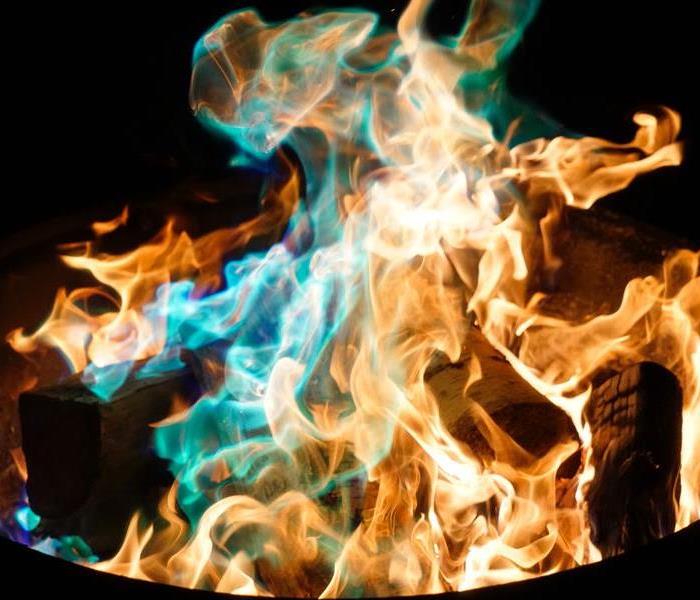 Call SERVPRO of NE Grand Rapids if you need assistance with fire damage restoration!
Call SERVPRO of NE Grand Rapids if you need assistance with fire damage restoration!
Have you ever been sitting around a campfire and noticed that not all the flames are the same color? At first glance, the flames probably look orange, but upon further inspection, shades of blue, white, yellow, or even green can be spotted in the crackling fire. There are two instances in which flames will change color. The first being the temperature, the second being substances in the fire that cause a chemical reaction, resulting in color change. For example, when a fire reaches 1112-1832 degrees Fahrenheit, the flames will appear red. If a fire is 1823-2192 degrees F, the flames will appear orange. If the temperature is 2192-2552 degrees F, the flames will be yellow. Lastly, temperatures of 2552+ F will result in blue or violet flames.
Another way flames can change color is when they come into contact with elemental substances. For instance, when sodium is found in fire, the flames result in orange. When Carbon and hydrogen are in the mix, the flames will turn blue. With copper, the flames will turn green, and with lithium, they will turn red.
As appealing as the colored flames are to look at, it’s important to be careful when dealing with any type of fire. Fire is unpredictable, and can cause severe damage to your home or property-no matter what color the flames are! While we hope you are never faced with fire damage, if you are ever in need, give SERVPRO a call! Our restoration experts will make the mess “Like it never even happened.”
SERVPRO of NE Grand Rapids specializes in the cleanup and restoration of residential and commercial property after Fire damage. Our staff is highly trained in property damage restoration. From initial and ongoing training at SERVPRO’s corporate training facility to regular IICRC-industry certification, rest assured our staff is equipped with the knowledge to restore your property.
If you need help with cleaning up after Fire damage, call the Professionals at SERVPRO of NE Grand Rapids 24/7 616.647.4300
Don't burn the leaves!
10/15/2019 (Permalink)
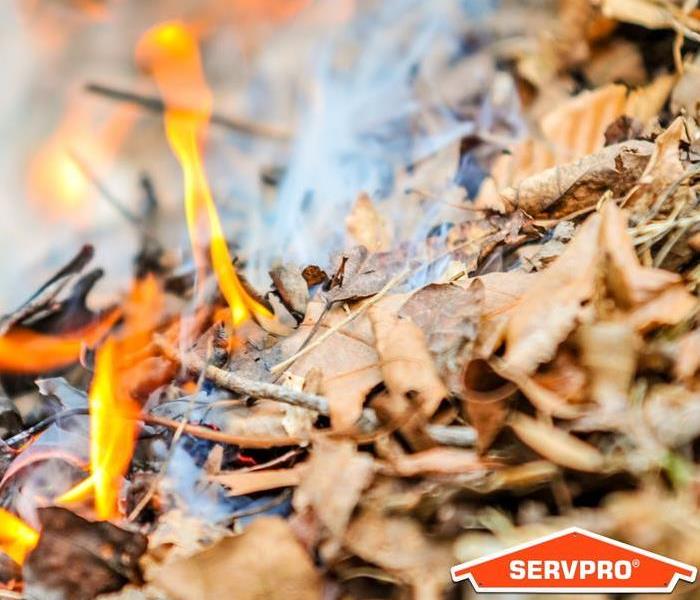 If the autumn season results in fire damage on your property or in your home, call the restoration experts at SERVPRO!
If the autumn season results in fire damage on your property or in your home, call the restoration experts at SERVPRO!
It is often said that autumn paints in colors that summer has never seen. The green leaves turning shades of red, orange, and yellow are many people’s favorite part of the fall season. However, when the leaves spill to the ground and are raked into piles, we often find ourselves wondering what to do with them. A common solution to getting rid of the piles of leaves Is to burn them. What many people don’t realize though, is that in some states and counties, burning leaves is illegal. Consider the following quote about Michigan’s leave burning laws from michigan.gov.
“Since 1995, solid waste regulations have prohibited the open burning of grass clippings and leaves in Michigan municipalities with a population of 7500 or more. Local governing bodies may enact an ordinance authorizing such open burning provided other regulations are not violated. They must submit a copy of the ordinance to EGLE's Materials Management Division, P.O. Box 30241, Lansing, MI 48909.”
Michigan.gov goes on to explain the open burning of leaves and other unwanted materials is banned in Michigan for health and safety purposes. According to their website, open burning pollutes the air and creates a higher risk for forest fires. It was also mentioned that the pollution from burning leaves can cause certain health issues such as irritated eyes, difficulty breathing / aggravated lungs, and distorted vision. It can also infect nearby soil, and leave strong, lingering odors.
While it is helpful to know that the burning of leaves is prohibited in Michigan, we are still left trying to figure out how to dispose of the leaves safely and legally. Thankfully, the American Lung Association of Iowa provided some insightful alternatives. The first alternative listed was mulching. Mulching provides an excellent source of nutrients to soil and protects it from wind and water erosion. Creating mulch is as simple as shredding leaves on your yard while mowing the lawn. Most lawn mowers now come equipped with a detachable mulching blade, but if not, you can buy one for your mower at minimal cost.
Another alternative to burning leaves is to compost them. Gardeningknowhow.com explains that composting leaves makes a dark, rich, earthy organic matter that can be used like soil. It adds nutrients to garden soil and the larger particle size helps enhance the tilth and loosen compacted earth.
Lastly, an easy alternative to burning your leaves is to bag them up for collection. Contact your local trash or recycling business to get information on scheduling bagged leaves for pickup.
If the fall season happens to result in fire damage on your property or in your home, trust that the professionals at SERVPRO will make it “Like it never even happened.”
SERVPRO of NE Grand Rapids specializes in the cleanup and restoration of residential and commercial property after fire damage. Our staff is highly trained in property damage restoration. From initial and ongoing training at SERVPRO’s corporate training facility to regular IICRC-industry certification, rest assured our staff is equipped with the knowledge to restore your property.
If you need help with cleaning up after fire damage, call the Professionals at SERVPRO of NE Grand Rapids 24/7 616.647.4300
Fire Prevention Week!
10/7/2019 (Permalink)
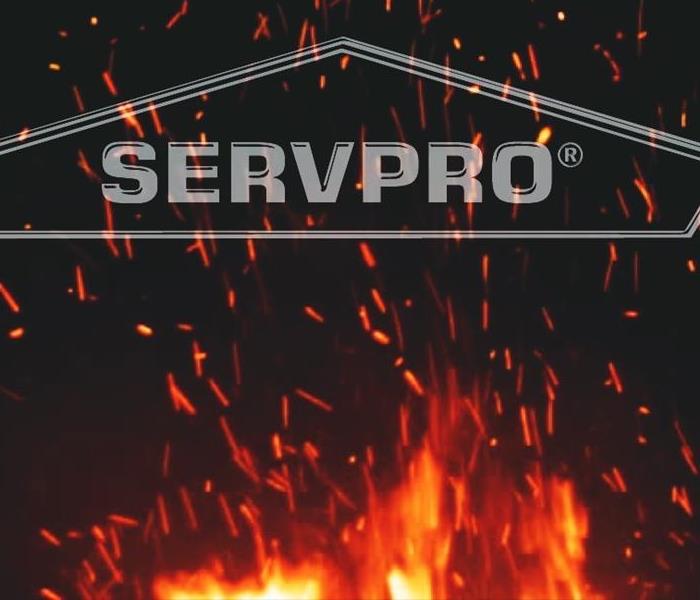 If your home suffers from fire damage, call the experts at SERVPRO!
If your home suffers from fire damage, call the experts at SERVPRO!
It’s National Fire Prevention Week!
Check out these 6 useful tips on fire prevention and fire safety for you and your family.
Tip #1-Two minute escape plan
Creating a fire escape plan for you and your family is of the upmost importance. Many people assume that they will have plenty of time to escape a fire, but usually you only have 1 or 2 minutes to escape. Making and practicing a 2-minute fire escape plan prepares your family for what to do in case of a fire, and could ultimately make a difference between life or death.
Tip #2-Meeting Place
After creating and practicing a fire escape plan, it is important to set a meeting place! Pick a safe meeting place that will be easy to find whether it’s day or night. The best way to do this is by selecting a safe spot that is clearly marked by a non-moving item, such as a tree or telephone pole!
Tip#3-Test Smoke Alarms Once a month
Check your smoke alarms monthly so you and your family don’t become one of these statistics!Three out of five home fire deaths result from fires in properties without working smoke alarms, and More than one-third (38 percent) of home fire deaths result from fires in which no smoke alarms are present. The risk of dying in a home fire is cut in half in homes with working smoke alarms, so be sure to regularly check yours! Source: National Fire Protection Association
Tip #4-Avoid Space heaters
When possible, avoid using portable / fixed space heaters, as they are the second highest cause of deaths in home fires! Yikes!
Tip#5-Stay Low
If you find yourself caught inside with fire and smoke, stay low to the ground as you make your way to the exit. ... You'll breathe less smoke if you stay close to the ground. Smoke naturally rises, so if there is smoke while you're using your escape route, staying low means you can crawl under most of it.
(https://kidshealth.org › kids › fire-safety)
Tip #6- Put smoke alarms on every floor
Install and maintain smoke alarms on every floor of your home and within every bedroom. Roughly 50% of home fire deaths occur during the night while people are sleeping.
SERVPRO of NE Grand Rapids specializes in the cleanup and restoration of residential and commercial property after Fire damage. Our staff is highly trained in property damage restoration. From initial and ongoing training at SERVPRO’s corporate training facility to regular IICRC-industry certification, rest assured our staff is equipped with the knowledge to restore your property.
If you need help with cleaning up after Fire damage, call the Professionals at SERVPRO of NE Grand Rapids 24/7 616.647.4300
Grilling safety
8/26/2019 (Permalink)
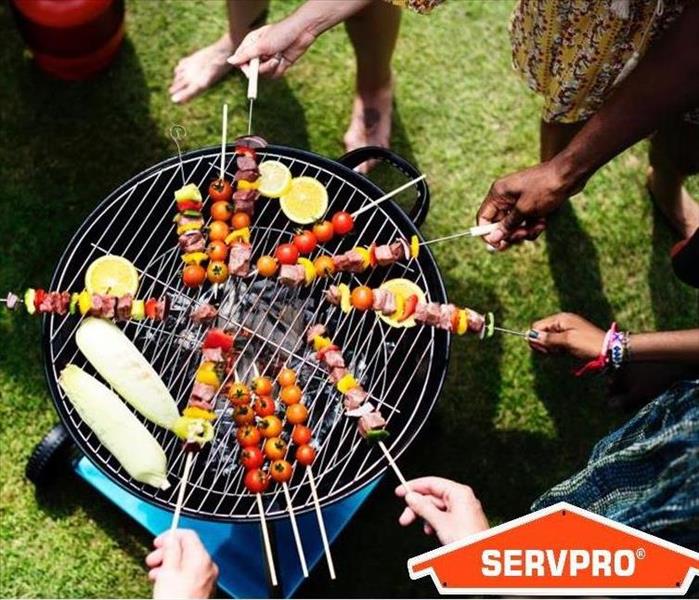 Make sure your Holiday is safe from fire damage!
Make sure your Holiday is safe from fire damage!
It's almost Labor Day Weekend!
If you plan to grill this weekend, keep reading for tips and tricks to keep everyone safe!
- Keep it clean! Fat and oil build up on the grill and the tray underneath are one of the main causes of grill fires. Cleaning up access oil and fat with a wire brush is the best way to get it off. It’s easiest to do this while the grill is still hot. It is recommended to deep clean your grill 2-3 times a year.
- For gas grills: Make SURE you check for propane leaks! Examine the gas tank thoroughly. Sometimes the holes are tiny, so keep a close eye on the tank while you examine it.
- Don’t leave the grill unattended. While this may sound obvious, many people don’t take it seriously. Remember, fire is unpredictable!
Side Note: Grills stay hot up to an hour after use, so keep that in mind when you’re finished grilling for the day.
- Proper clothing. If your clothing has long sleeves or hanging tassels/ strings, consider changing into a tee shirt or ask someone else to grill. Clothing that has lose ends and hanging strings can easily catch fire.
- Stick to the outdoors. Make sure your grill is stationed outside, and at least 10 feet away from the house! Sadly, 29% of grill fires start from the balcony or porch of a house. We don’t want that to be you, so the farther away, the better!
These 5 tips will ensure you, your family, and friends have a fun AND safe holiday weekend!
About SERVPRO of NE Grand Rapids
SERVPRO of NE Grand Rapids specializes in the cleanup and restoration of residential and commercial property after a storm damage, fire, and smoke or water damage event. Our staff is highly trained in property damage restoration. From initial and ongoing training at SERVPRO’s corporate training facility to regular IICRC-industry certification, rest assured our staff is equipped with the knowledge to restore your property.
If you need help with cleaning up after a fire damage event call the Professionals at SERVPRO of NE Grand Rapids 24/7 616.647.4300
Fire Safety and Fireworks
6/17/2019 (Permalink)
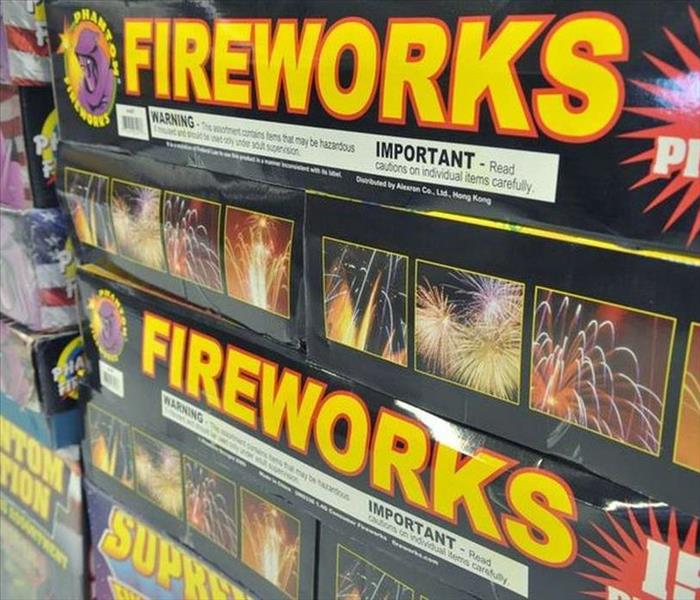 Celebrate Safety this Holiday
Celebrate Safety this Holiday
With the warmer months of the summer comes times to celebrate events with barbeques, family events and everyone’s favorite firework displays. These times where we use fireworks for celebrations do we take the necessary safety precautions to prevent injury or property damage needed? In all years studied, Independence Day has more incidents reported in NFIRS than any other day of the year. The number of incidents in the NFIRS database associated with July 4 and July 5 were 2.4 times the average daily number of incidents on other days of the year. Brush and outside fire incidents were nearly four times higher during this holiday than on the average day. Structure fires increase on July 4 and July 5th as well. As would be expected, fireworks were responsible for a considerable portion of the increase in fire incidence on Independence Day. In fact, 31 percent of the total annual number of fireworks−related fires occur on July 4 and 5. These fires individually were less severe than fires generally, with lower average dollar loss per fire, less than half of the injuries and one third the deaths per fire.
source: https://www.usfa.fema.gov
About SERVPRO of NE Grand Rapids
SERVPRO of NE Grand Rapids specializes in the cleanup and restoration of residential and commercial property after a fire, smoke or water damage event. Our staff is highly trained in property damage restoration. From initial and ongoing training at SERVPRO’s corporate training facility to regular IICRC-industry certification, rest assured our staff is equipped with the knowledge to restore your property.
If you need help with cleaning up after a fire call the Professionals at SERVPRO of NE Grand Rapids 24/7 616.647.4300
March is American Red Cross Month
3/7/2019 (Permalink)
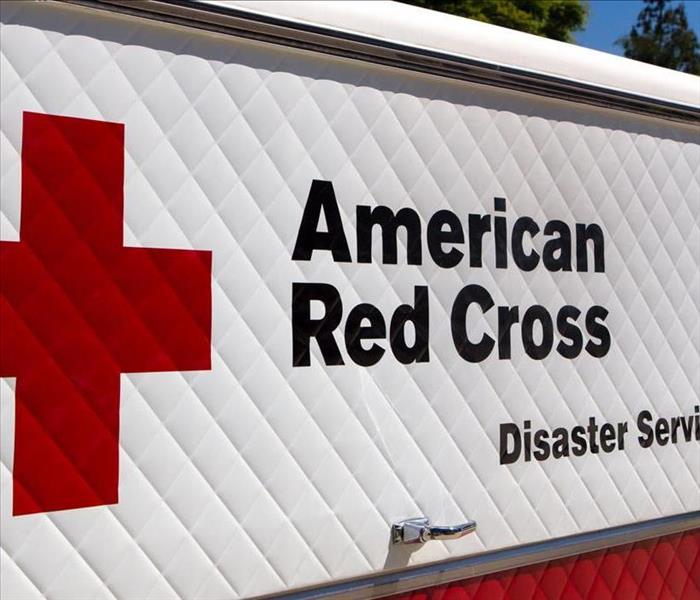 Where can you make a Difference?
Where can you make a Difference?
Founded in 1881, the American Red Cross is a charitable organization that relies on donations and volunteers to carry out their mission. Weather it is disaster relief, blood donations, military family support, or training and certifications the Red Cross is committed to helping those who need it the most. You probably hear about the impact the Red Cross has on TV when it comes to major disasters like hurricanes, wildfire and tornadoes. The American Red Cross shows hard work and dedication day in and day out that doesn’t become covered in the media. With over 70,000 disasters a year they respond to the public with support after many emergencies that they face. Every year, March is declared Red Cross Month by the President of the United States. The American Red Cross celebrates by honoring the “everyday heroes” who support and carry out the mission of the Red Cross network.
The Red Cross depends on generous contributions of time, blood, and money from the American public to support the lifesaving services and programs. To learn more about the American Red Cross, or about how you can get involved, visit redcross.org
We are here for any size disaster situation 24 hours a day and 7 days a week! Call Today- 616.647.4300
About SERVPRO of NE Grand Rapids
SERVPRO of NE Grand Rapids specializes in the cleanup and restoration of commercial and residential property after a emergency event. Our staff is highly trained in property damage restoration. From initial and ongoing training at SERVPRO’s corporate training facility to regular IICRC-industry certification, rest assured our staff is equipped with the knowledge to restore your property.
When a house fire strikes what do you do after
12/18/2018 (Permalink)
 House Fires happen every day. Are you prepared?
House Fires happen every day. Are you prepared?
Recovering from a fire can be a physically and mentally draining process. When fire strikes, lives are suddenly turned around. Often, the hardest part is knowing where to begin and who to contact.
The following checklist serves as a quick reference and guide for you to follow after a fire strikes.
- Contact your local disaster relief service, such as The Red Cross, if you need temporary housing, food and medicines.
- If you are insured, contact your insurance company for detailed instructions on protecting the property, conducting inventory and contacting fire damage restoration companies. If you are not insured, try contacting private organizations for aid and assistance.
- Check with the fire department to make sure your residence is safe to enter. Be watchful of any structural damage caused by the fire.
- The fire department should see that utilities are either safe to use or are disconnected before they leave the site. DO NOT attempt to reconnect utilities yourself.
- Conduct an inventory of damaged property and items. Do not throw away any damaged goods until after an inventory is made.
- Try to locate valuable documents and records. Refer to information on contacts and the replacement process inside this brochure.
- If you leave your home, contact the local police department to let them know the site will be unoccupied.
- Begin saving receipts for any money you spend related to fire loss. The receipts may be needed later by the insurance company and for verifying losses claimed on income tax.
- Notify your mortgage company of the fire.
- Check with an accountant or the Internal Revenue Service about special benefits for people recovering from fire loss.
For more information on what you should do after a home fire, including valuing your property, replacing documents, and salvage hints, visit the U.S. Fire Administration’s website.
Source: https://www.ready.gov/home-fires
About SERVPRO of NE Grand Rapids
SERVPRO of NE Grand Rapids specializes in the cleanup and restoration of residential and commercial property after a fire, smoke or water damage event. Our staff is highly trained in property damage restoration. From initial and ongoing training at SERVPRO’s corporate training facility to regular IICRC-industry certification, rest assured our staff is equipped with the knowledge to restore your property.
Holiday Cooking Comes with Caution
11/9/2018 (Permalink)
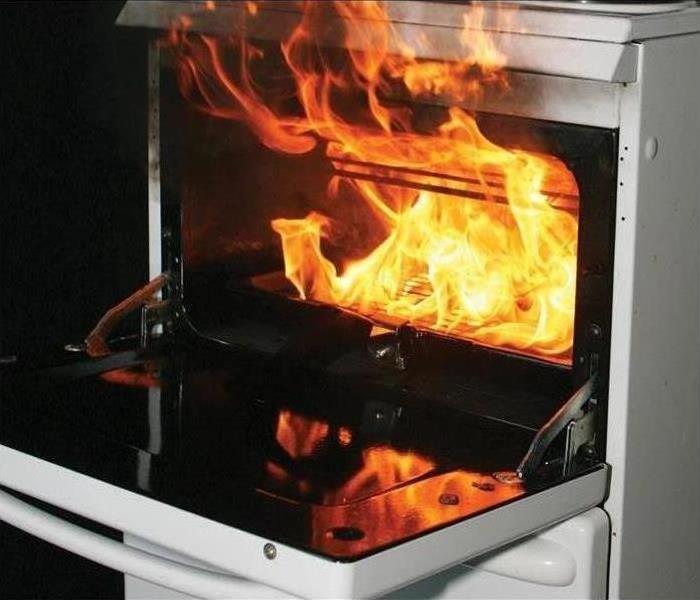 Don't Spoil your Holiday this year
Don't Spoil your Holiday this year
Holiday Cooking Safety
Each November, families gather to celebrate Thanksgiving by preparing a delicious feast, but if you don’t practice safe cooking habits, your holiday could become hazardous very quickly. According to the National Fire Protection Association, cooking fires are the number one cause of home fires and home injuries. The leading cause of fires in the kitchen is unattended cooking. It’s important to be alert to prevent cooking fires.
- Be on alert! If you are sleepy or have consumed alcohol don’t use the stove or stovetop.
- Stay in the kitchen while you are frying, grilling, boiling, or broiling food.
- If you are simmering, baking, or roasting food, check it regularly, remain in the kitchen while food is cooking, and use a timer to remind you that you are cooking.
- Keep anything that can catch fire—oven mitts, wooden utensils, food packaging, towels, or curtains—away from the stovetop.
Source: National Fire Protection Association
About SERVPRO of NE Grand Rapids
SERVPRO of NE Grand Rapids specializes in the cleanup and restoration of residential and commercial property after a storm damage, fire, and smoke or water damage event. Our staff is highly trained in property damage restoration. From initial and ongoing training at SERVPRO’s corporate training facility to regular IICRC-industry certification, rest assured our staff is equipped with the knowledge to restore your property.
If you need help with cleaning up after a fire damage event call the Professionals at SERVPRO of NE Grand Rapids 24/7 616.647.4300
Is your home clothes dryer hiding something
10/18/2018 (Permalink)
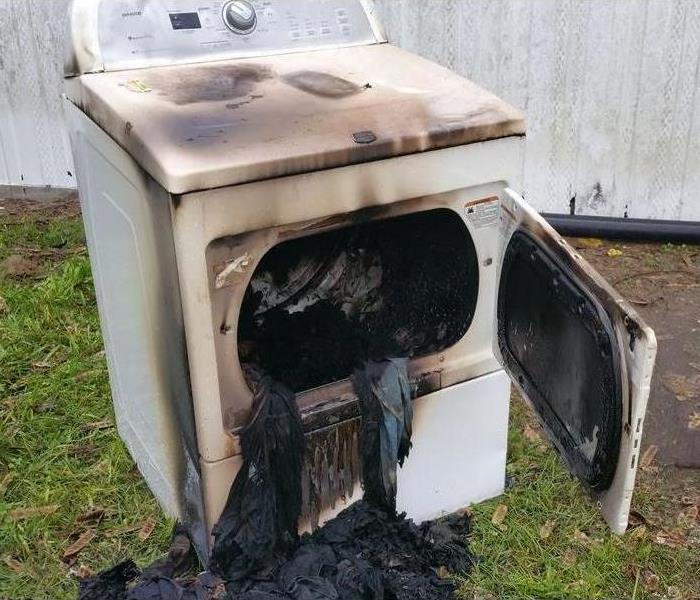 Always make sure your dryer vent is clean
Always make sure your dryer vent is clean
Facts about home clothes dryer fires
- 2,900 home clothes dryer fires are reported each year and cause an estimated 5 deaths, 100 injuries, and $35 million in property loss.
- The leading cause of home clothes dryer fires is failure to clean them (34 percent).
- More home clothes dryer fires occur in the fall and winter months, peaking in January.
Clothes dryer dos
Installation
- Have your clothes dryer installed by a professional.
- Make sure the correct electrical plug and outlet are used and that the dryer is connected properly.
- Read manufacturers' instructions and warnings in use and care manuals that come with new dryers.
Cleaning
- Clean the lint filter before and after each load of laundry. Don’t forget to clean the back of the dryer where lint can build up. In addition, clean the lint filter with a nylon brush at least every six months or more often if it becomes clogged.
- Clean lint out of the vent pipe every three months.
- Have your dryer cleaned regularly by a professional, especially if it is taking longer than normal for clothes to dry.
Maintenance
- Inspect the venting system behind the dryer to ensure it is not damaged or restricted.
- Put a covering on outside wall dampers to keep out rain, snow and dirt.
- Make sure the outdoor vent covering opens when the dryer is on.
- Replace coiled-wire foil or plastic venting with rigid, non-ribbed metal duct.
- Have gas-powered dryers inspected every year by a professional to ensure that the gas line and connection are together and free of leaks.
- Check regularly to make sure nests of small animals and insects are not blocking the outside vent.
- Keep the area around the clothes dryer free of items that can burn.
- If you will be away from home for an extended time, unplug or disconnect the dryer.
Source: www.usfa.fema.gov/prevention
About SERVPRO of NE Grand Rapids
SERVPRO of NE Grand Rapids specializes in the cleanup and restoration of residential and commercial property after a fire, smoke or water damage event. Our staff is highly trained in property damage restoration. From initial and ongoing training at SERVPRO’s corporate training facility to regular IICRC-industry certification, rest assured our staff is equipped with the knowledge to restore your property.
If you need help with cleaning out your home or dryer vent call the Professionals at SERVPRO of NE Grand Rapids 24/7 616.647.4300
Fire Safety Month
10/17/2018 (Permalink)
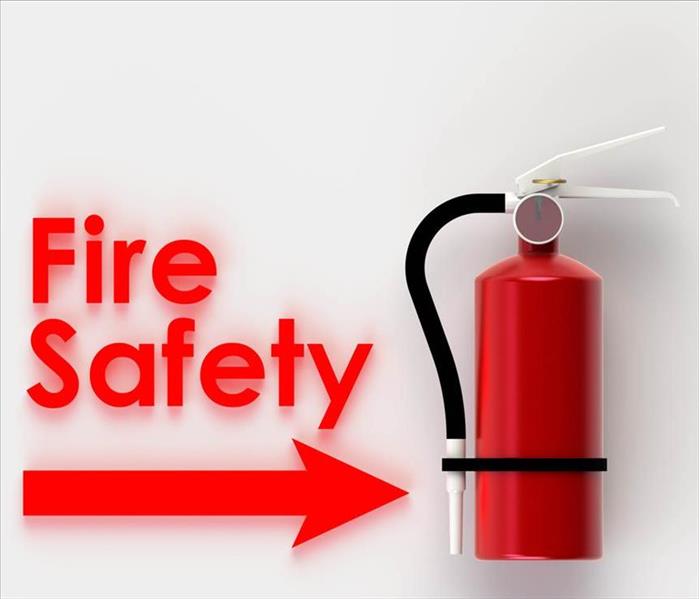 Do you have a plan ready?
Do you have a plan ready?
Fire Safety Month
During the month of October our attention is focused on National Fire Prevention. Promoting fire safety along with knowing the hazards we face every day. With a few quick safety checklists points you can have an idea of what things to prepare for.
Fire Safety Checklist:
- Avoid using space heaters close to bedding and sheets that will catch fire easily.
- When using lit candles make sure to keep a distance away from other objects and always keep an eye on the candle while it’s burning.
- Electrical objects should be checked for frayed cords to prevent electrical fire from forming.
- Teach others around you what to do when it comes to clothing catching fire. Always remember to Stop! Drop! And Roll!
- Replace batteries in smoke alarms at least once a year and have one located in every room especially in bedrooms.
- Have an escape plan for you and your family and write it out and display it for everyone to see. Always practice and review the plan to make sure everyone knows where to go in case of a fire.
About SERVPRO of NE Grand Rapids
SERVPRO of NE Grand Rapids specializes in the cleanup and restoration of residential and commercial property after a fire, smoke or water damage event. Our staff is highly trained in property damage restoration. From initial and ongoing training at SERVPRO’s corporate training facility to regular IICRC-industry certification, rest assured our staff is equipped with the knowledge to restore your property.
If you need help with cleaning up after a fire call the Professionals at SERVPRO of NE Grand Rapids 24/7 616.647.4300
Don't let an Electrical Fire damage your property
9/26/2018 (Permalink)
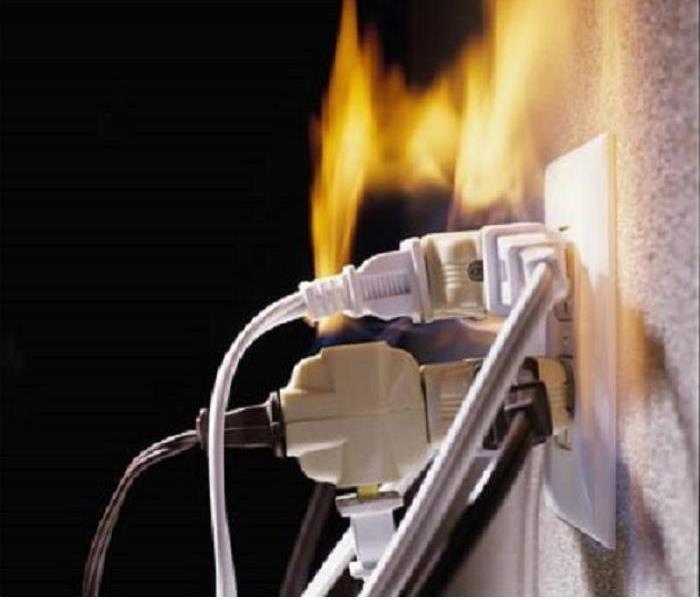 What to look for to prevent fire in your home
What to look for to prevent fire in your home
SERVPRO Technicians are BOTH Certified and Properly Equipped to Remediate After a Fire in Your Home
Electrical fires are one of the top five causes of fires in manufacturing plants. Here a non-exhaustive list of specific electrical hazards:
- Wiring that is exposed or not up to code
- Overloaded outlets
- Extension cords
- Overloaded circuits
- Static discharge
The damage caused by these fires can quickly compound thanks to several of the other items on this list. Any of the above hazards can cause a spark, which can serve as an ignition source for combustible dust, as well as flammable liquids and gasses.
How to prevent electrical fire incidents
As with the previous risks, the key to preventing electrical fires is awareness and prevention. This involves training, maintenance, and following best practices. Here are a few to put into practice right now:
- Don’t overload electrical equipment or circuits.
- Don’t leave temporary equipment plugged in when it’s not in use.
- Avoid using extension cords, and never consider them permanent solutions.
- Use antistatic equipment where required by NFPA or OSHA.
- Follow a regular housekeeping plan to remove combustible dust and other hazardous materials from areas that contain equipment and machinery.
- Implement a reporting system so that anyone who observes an electrical fire risk can report it without consequences.
For more information on electrical safety, consult NFPA 70: National Electrical Code and OSHA’s “Electrical Safety in the Workplace.”
Source: http://news.nilfiskcfm.com
SERVPRO of NE Grand Rapids is always available 24 hours a day when a loss becomes overwhelming from a fire in the workplace or in your home. These simple ideas will help you with prevention where its most important so seconds dont turn into disaster.
Looking for the right signs of Lead Paint
6/29/2017 (Permalink)
 You can never be to sure. Test your home today
You can never be to sure. Test your home today
Where to Look
While virtually any painted surface in an older home could have been treated with lead paint, there are a few particular places where it might be more likely to appear. These include any exterior surface, surfaces that are regularly exposed to weather (like windows and doors), interior trim, stairs, and railings. Also consider that older furniture and toys could contain lead paint as well.
What to Look For
Lead paint typically cracks and chips in a distinct “scaly” or geometric pattern. This is probably the best indication of the presence of lead paint, although bear in mind that oil and latex paints can crack, flake, and chip as well. A secondary indicator that you might be dealing with lead paint is that it rubs off with a chalky residue.
If You Suspect It’s Lead Paint
If you think you might have lead paint in your home, it is best to confirm it with a lead paint test. You can purchase a test kit for around $10 at your local paint store or big-box hardware store. There are a couple of different types of test kits available at this price, so be sure to read the label before you purchase it. The first, and my chosen method, is the disposable swab kit. One kit typically comes with two swabs, each of which contains non-toxic chemicals that turn a specific color when they come in contact with lead. This test yields results within one minute. If you feel uncomfortable interpreting the results of a swab test, your other option is to purchase a kit that allows you to collect a sample of the paint in question and send it to a laboratory for analysis. Typically these results will be mailed to you within a week of the lab’s receipt of your sample.
If Your Paint Tests Positive for Lead
First, don’t panic. Some experts agree that if your paint is not cracking, chipping, chalking, or flaking off and is not in a high-traffic or child-accessible area it is best to leave it alone and simply monitor it for future signs of damage. However, lead paint in heavy-use areas like windows, doors, stairs and railings should be addressed even if it is not clearly chipping off. The friction resulting from the regular use or operation of these surfaces can create airborne lead dust. In addition, any cracking, flaking, chipping, or otherwise compromised lead paint should be addressed immediately.
Source: http://www.doityourself.com/stry/identifying-lead-paint
About SERVPRO of NE Grand Rapids
SERVPRO of NE Grand Rapids specializes in the cleanup and restoration of residential and commercial property after a fire, smoke or water damage event. Our staff is highly trained in property damage restoration. From initial and ongoing training at SERVPRO’s corporate training facility to regular IICRC-industry certification, rest assured our staff is equipped with the knowledge to restore your property.
Things to prevent a fire from Fireworks this Holiday
6/26/2017 (Permalink)
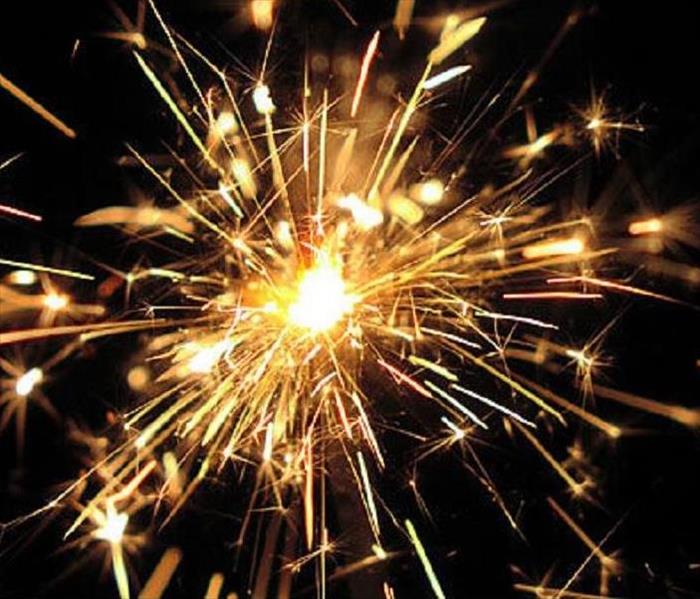 One Sparkler can start a Huge Disaster
One Sparkler can start a Huge Disaster
Firework Injury Statistics
- Every year almost 10,000 people are treated in emergency rooms with fireworks-related injuries. The estimated cost of the injuries exceeds $100 million dollars annually.
- Over 2/3 of all fireworks injuries occur between June 16 and July 16
- 72% of all fireworks injuries are to males.
- Most fireworks injuries occur to the face (12%), eyes (17%), and hands (34%).
- Fires caused by fireworks injure 50 and kill 15 people on average annually.
Tips for Having a Safe Fireworks Display
The safest and most effective way to prevent firework-related injuries and deaths is to leave all fireworks displays to trained professionals. If these professionals are unavailable for your firework displays the following safety tips will help keep you and your audience safe.
Only adults should use fireworks.
The vast majority of firework-related injuries happen to children under the age of 15. Understanding the risks fireworks pose to children and the importance of having adults present to handle fireworks can greatly decrease injuries and deaths.
Follow federal and state firework laws.
Every state has unique rules and regulations concerning the use, possession, and distribution of all types of fireworks. Knowing the laws in your state can keep you safe, prevent fines, and protect you from purchasing unsafe or illegal fireworks. The following link contains updated laws for every state concerning fireworks.
Use fireworks in clear, open areas
Make sure the area being used is clear of any obstructions. Also, make sure the area where fireworks are used is clear of dry, potentially flammable grass, wood, or debris. It is also a good idea to monitor your state’s wildfire warnings and make sure there isn’t a fire weather watch in effect. These warnings occur during extended periods of dry weather and higher-than-average wind speeds. During these conditions, lighting fireworks could lead to potentially lethal wildfires. For more information regarding wildfire warnings visit the USDA Forest Service Page.
Light fireworks on flat surfaces.
Using a flat surface is extremely important when using fireworks. If the area where you are using fireworks is too uneven, there is the potential they could tip over and go off horizontally and severely injure someone. Flat surfaces are also important when using fireworks that take off vertically, like bottle rockets. If the area is too uneven they could have an angled trajectory which could result in an injury to a person, property damage, or fires.
Have fire extinguishers ready.
Have water and/or a fire extinguisher nearby. When using fireworks, there should be at least one person assigned the duty of operating the fire extinguisher in case something should go wrong.
Store and dispose of fireworks safely.
Do not store fireworks for extended periods of time and use as soon after purchase as possible. When storing fireworks, keep them in a cool dry place out of the reach of children.
Once a firework is used it should be allowed to rest for 15 to 20 minutes. Once this period of time is over it should be placed in a bucket of water to soak thoroughly. After the rest period and soak period they can be safely disposed of in a regular trash receptacle. Both of these steps are important because if fireworks are not soaked properly there is a potential for heat to be trapped inside of them and they can reignite and cause trash fires. Also, use caution when cleaning up debris from used fireworks since certain parts may still be extremely hot, combustible, or sharp.
Know how to handle firework duds.
If a firework malfunctions, do not attempt to relight it. Allow it to rest for 15 to 20 minutes and then safely douse it with water and let sit for another 15 to 20 minutes. After this period of time submerge the firework in water and allow it to soak. Once the firework is completely soaked it is safe to dispose.
Source: http://cultureofsafety.thesilverlining.com/safety-tips/fireworks
Be safe out this holiday season! Call SERVPRO of NE Grand Rapids if Disaster hinders your Celebrations 24/7 where we can clean up any situation.






 24/7 Emergency Service
24/7 Emergency Service































